http://www.antifascistencyclopedia.com/allposts/nazi-t4-psychiatrists-some-were-executed-some-suicided-some-escaped-justice
Nazi “T4? Psychiatrists – Some were Executed, Some Suicided, Some Escaped Justice
27th October 2010
Nazi “T4? Psychiatrists – Some were Executed, Some Suicided, Some Escaped Justice
” … T4 was, in fact, the nerve center of the extermination campaign
and was not just the forerunner of the ensuing mass extermination of the
Jews, Gypsies, Poles and other human beings ‘unworthy of life.’ T4 was
actually the organizer, education center and spiritual and
administrative focal point. … “
PSYCHIATRISTS: THE MEN BEHIND HITLER
By Karl Loren
Definitions:
GSPN: German Society for Psychiatrists and
Neurologists which had changed its name in 1955 from the German Society
of Neurologists and Psychiatrists, started in 1935.
Sterilization Act, 1933: the law that cleared the
path for wholesale euthanasia in Germany. The estimated number of
sterilizations was between 100,000 and 350,000.
WPA: World Psychiatric Association
WFMH: World Federation of Mental Health
T4: This is the name and number of a street in
Berlin, Tiergartenstrasse 4, where the Working Association of
Sanitariums and Caretaking Facilities of the Republic
(Reichsarbeitgemeinschaft Heil-und Pflegeanstalten) was located. The
organization’s sole purpose was to gather and kill “inferiors.” T4 was,
in fact, the nerve center of the extermination campaign and was not just
the forerunner of the ensuing mass extermination of the Jews, Gypsies,
Poles and other human beings “unworthy of life.” T4 was actually the
organizer, education center and spiritual and administrative focal point
that would continue in its criminal activity for another six years.
Questionnaires from state and private sanitariums and caretaking
institutes poured into the T4 euthanasia headquarters. Consultants then
marked the form: those who were to be killed had a red “+” sign, and
those allowed to live were marked with a blue “-” sign.
They “did no examinations, had no access to medical histories, and
made their decision solely on the basis of the questionnaire.” However,
Jewish inmates did not have to fit the normal criteria used for normal
medical killing.
By August 1941, T4 had already reached its original quota of 70,000
persons euthanized. Indeed, it had exceeded its quota–by 273 persons.
The psychiatrists involved in the Nazi killing machine were needed
for their leadership skills and chosen for their closeness to the Nazi
regime, their high recognition in the profession and their sympathy for
euthanasia, or at the very least a radical approach to eugenics.
ERNST RÜDIN: PRESIDENT OF GSPN FROM 1935 TO 1945
 In
1916, Ernst Rüdin was appointed Professor of Psychiatry of the
Department of Genealogy of the German Research Institute for Psychiatry
in Munich and in 1919 became its director. In 1933, he was promoted
within the Third Reich to Commissioner of the German Society for Racial
Hygiene and named Chairman of the Advisory Board of experts on
population and racial politics.
In
1916, Ernst Rüdin was appointed Professor of Psychiatry of the
Department of Genealogy of the German Research Institute for Psychiatry
in Munich and in 1919 became its director. In 1933, he was promoted
within the Third Reich to Commissioner of the German Society for Racial
Hygiene and named Chairman of the Advisory Board of experts on
population and racial politics.
Besides being a racial hygienist and the principal drafter of the
Sterilization Act he was also the co-author of the treatise which was
relied upon as the Nazi’s justification for the Law for the Prevention
of Genetically Diseased Children. His co-author, Falk Ruttke, was also
the author of the Nuremberg Race Act, which legalized the persecution of
Jews.
It is difficult to overstate Rüdin’s influence on the Third Reich’s
atrocities. He was able to become a significant source of legitimization
for the Nazi regime’s racial policies and through him, psychiatry
enjoyed what amounted to carte blanche to research, develop and even
practice its most deadly and inhumane theories and methods.
In 1937, he joined the Nazi Party and two years later was awarded the
Goethe Medal for Art and Science by Adolf Hitler himself. Five years
later, the Fuhrer personally honored Rüdin with a bronze medal embossed
with a swastika and with the honorary title of “Pioneer of Racial
Hygiene.”
In 1943, he wrote of Hitler, extolling him and the Regime for their
“decisive…path-breaking step toward making racial hygiene a fact among
the German people…and inhibiting the propagation of the congenitally ill
and inferior.” He praised the laws for “preventing the further
penetration of the German gene pool with Jewish blood,” and the SS for
“its ultimate goal, the creation of a special group of medically
superior and healthy people of the German Nordic type.”
Rüdin was removed from his directorship in November of 1945 by the
American military government, but he was never brought to trial. He
claimed to be “only a nominal member” of the Nazis and with that managed
to be completely exonerated. He is one of the most outrageous examples
of psychiatrists who neither fled nor hid. They just acted as if nothing
had happened.
Escaped Justice:
Leonardo Conti, State Secretary of the Ministry of Interior, Member of the SS:
In July, 1939, Hitler appointed Conti responsible for administering
the euthanasia program. On October 9, 1939, an edict was issued
requiring all institutions throughout the Third Reich to categorize all
of their patients and inmates according to stated criteria. Conti
required reports to be compiled and submitted on all those in care or
custody who suffered from a variety of stated symptoms, among them:
schizophrenia, epilepsy, senility, paralytic diseases, and
feeble-mindedness. Also to be reported were all persons who had been
imprisoned for five years or more or who were “criminal” or “not of
German or related species’ blood.”
In 1940, Conti personally administered lethal injections to four to
six patients who “died only slowly” and some had to be injected a second
time. Consequently, the gas chambers were considered a better killing
alternative.
Suicide:
Conti, who remained Minister of Health until 1945, committed suicide, avoiding justice.
Werner Heyde: T4 DIRECTOR, Member of the Nazi Party and Gestapo
In 1933, Heyde was one of the chief organizers of the euthanasia
program. He released a mental patient, Theodor Eicke, a hardened
convicted felon, as no longer dangerous. Later, Eicke became the first
commandant of Dachau and in 1934 was promoted to Inspector General and
Chief of all concentration camps. By 1936, Eicke had become the leader
of the SS “Deathhead” units of which Heyde was also a member.
Heyde joined the Nazi party in 1933, then joined and became an
advisor to the Gestapo. By 1935 had become an Associate Judge of the
Court for the Elimination of Hereditary Disease which arbitrated
sterilization requests. On July 1, 1936, Heyde was appointed to
establish and direct “the psychiatric-neurological and genetic
surveillance of the concentration camps.” In January, 1940, he oversaw
the first killings which used carbon monoxide gas. Eighteen to twenty
naked men were led into the “shower room” by nursing staff. The door was
shut behind them–they collapsed within one minute. After another five
minutes the room was aired. SS personnel took the dead on special
stretchers to the crematorium furnaces. The victims did not undergo any
medical examination to determine if they were dead before they were
cremated. The apparent “success” of this test killing hastened the
production of killing facilities.
Later Heyde moved to Berlin to become T4's medical director and to
supervise it’s consulting staff of approximately 30 physicians, most of
whom were psychiatrists.
Heyde was eventually arrested in 1947 by the allies but fled and
managed to resume his work as a psychiatrist under the alias of “Dr.
Sawade.” He became active as a psychiatric consultant in the Courts of
the Schleswig-Holstein district of Germany, “even though numerous
professors, the Director of the Social Court, the Chief Justice of the
provincial Social Court, a district court counselor, a Social Court
counselor, two presidents of the Senate and even a federal judge all
knew that Professor Heyde was also Dr. Sawade.”
Suicide:
Heyde was re-arrested but in 1961 committed suicide in his cell, before his trial could begin.
 Professor Paul Nitsche: Head of T4.
Professor Paul Nitsche: Head of T4.
Starting in April of 1941, eminent physicians and psychiatrists began
to visit the concentration camps, among them Dr. Werner Heyde and
Nitsche, the leading T4 consultants. Nitsche, who replaced Heyde as head
of the T4, later admitted that “the killing… went along the exact same
lines and with the same registration forms as in the insane asylums.”
He was also editor of the German Journal for Mental Hygiene and was director of various state hospitals.
Executed: Ordered to be executed by judges in the Nuremberg Trials, he was sent to the guillotine on March 25, 1948, in Dresden.
Max de Crinis: T4 Nazi psychiatrist, MEMBER OF THE SS.
An Austrian, he practiced in Germany and joined the Nazi Party in
1931. He was considered “the most outspoken and influential Nazi” within
German psychiatry and was a psychiatric consultant at the highest level
of the regime. He was thought to have provided Hitler with the wording
for the original “euthanasia” decree.
By 1936, he was active in the SS and its Race and Settlement Office;
he became medical director of the Ministry of Education in 1941. He was
also Committee Member of the Kaiser Wilhelm Society (which became the Max Planck Institute involved in psychiatric research) and was a Director of the European League for Mental Hygiene.
Suicide:
While fleeing from the authorities and justice, on May 1, 1945, De
Crinis killed himself in the prescribed Nazi manner, by swallowing
potassium cyanide but not before he also caused the deaths of his family
in the same way.
IMFRIED EBERL: T4 Nazi Psychiatrist, MEMBER OF THE NAZI PARTY
Eberl served as a deputy to Dr. Werner Heyde in supervising the false
causes of death and to establish policies for maintaining subterfuge
for T4.
An Austrian, he joined the Nazi Party when he was 21-years-old. At
29, he was one of the first to be shown how the poison gas killing
methodology worked. In addition to serving in the inner circle of
psychiatric experts, he was given special authority to enter various
psychiatric institutions to investigate their attitudes towards, and
willingness to work in the euthanasia killing program.
At age 32, he went on to become commandant of the notorious death
camp, Treblinka, where, with his T4 experience, he was able to construct
the gassing apparatus for killing inmates.
He also organized the transporting of Jewish patients to his killing
institution at Brandenburg. In August, 1942 alone, he had 215,000 Jews
killed (compared to 18,000 patients killed in just over 18 months when
he was a T4 expert).
Escaped Justice:
Carl Schneider, T4 psychiatrist, MEMBER OF THE NAZI PARTY
An Austrian, he became director of the University Clinic in
Heidelberg. He joined the Nazi Party in 1932 and became a “leader of
German psychiatry,” who “took on the mission of preaching National
Socialism and offering his own enlightened program of work therapy …”
“Work therapy,” sterilization and medical killing were his proffered
ways of “helping” patients. He obtained large sums of money for a
research institute where he initiated some of his work, using the brains
from the euthanasia program.
At the Rhenish Eichberg Institute in the Rhinegau, which conducted
one of the euthanasia programs, human experiments with medical drugs
were performed on behalf of I. G. Farben, the chemical manufacturer,
which provided carbon monoxide for the gas chambers of concentration
camps and the pesticide Zyklon B for experiments on Soviet prisoners of
war. At this institute, both children and adults were killed on a
regular basis until the end of the war. An argument over the brains of
these victims erupted between the Eichberg and Heidelberg research
departments. Professor Schneider in Heidelberg demanded part of the
so-called “material” for his own research.
Executed:
Schneider was a member of the T4 team. He was executed as a result of the Nuremberg Trials.
Professor Hans Heinze: T4 Nazi psychiatrist; headed the pediatric department of a killing Institute, Laender.
Heinze gained prominence in the Reich’s “Committee for the Scientific
Registration of Hereditary and Inherent Sufferings,” the “cover
organization for the murder of handicapped children and youth.” The
committee was affiliated with T4. The only difference was that it was
responsible for child euthanasia.
In 1931, while Dr. Heinze was a physician at the children’s
outpatient department at Leipzig, he collaborated with Paul Schroder on a
book called Child Personalities and Their Abnormalities. In the first
paragraph of the introduction, they define what they mean by the word
“degenerate”: It “is not equal to ‘sick’. ‘Degenerate’ also includes the
oversized or undersized person, the athlete, the highly talented, the
genius. A degenerate in the psychological area is someone who…deviates
above and below the average.”
Heinze was dedicated to defining, segregating and exterminating
certain classes of people, following the dictates of the state economy,
Nazi doctrine and the precepts of “racial hygiene psychiatry.”
In 1939, Heinze, a director of the Kaiser Wilhelm Institute (see Max Planck Institute),
was bestowed with the unusual honor of a seat on its Board of Trustees
of their Brain Research Institute, and it is extremely likely that a
child-killing department was installed there.
By 1940, Leander Institute at Brandenburg-Gorden, where Heize was
head of its pediatric department, was functioning as a halfway house for
T4 “supply transports.” Some of the sanitarium’s children were sent to
the gas chambers of the former prison at Brandenburg, after which their
corpses were dissected for psychiatric research.
The institution was also used as training center for other physicians
in charge of killing facilities and was referred to as the “Reich’s
Schooling Station.”
Sentenced to Hard Labor: Then Mentally Unfit to Stand Trial
Heinze was tried and convicted in 1946 by a Russian military tribunal
which sentenced him to seven years’ hard labor. He served his term in
various prisons until 1952, whereupon he returned to Germany, and became
an assistant physician at a sanitarium near Munster in Westphalia.
In 1962, a preliminary inquiry into Heinze’s wartime activities was
begun, but several medical opinions certified him as unfit to be
questioned and unable to understand the proceedings. In 1967, he was
deemed unfit to stand trial because he was a “mental wreck.”
When he died, nearly two decades later, the following obituary
appeared: “At the age of 87, the former director of our department for
child and adolescent psychiatry died on February 4, 1983…We shall honor
his memory”–signed by The Board of Directors and the Director of Human
Resources of the Neiders state hospital of Lower Saxony, Wunstdorf.
DR. VALENTIN FALTLHAUSER, T4 EXPERT
Director of Kaufbeuren psychiatric hospital and its Child Euthanasia
program. Faltlhauser passed around a menu at the facility: “totally fat
free,” it consisted of potatoes, yellow turnips, and cabbage cooked in
water. “The effect,” he claimed, “should be a slow death, which would
ensue in about three months.”
On May 8, 1945, the war ended in Germany. In the extermination
institutes, they either kept on killing, or let the patients starve to
death. As late as May 29, 1945, a four-year-old feeble-minded boy was
murdered in Kaufbeuren, and on July 2, 1945, a physician who was junior
to the director, hanged himself–Only 12 hours earlier, the last adult
patient had died.
Escaped Justice:
Berthold Kihn of Jena: T4 psychiatrist: Kihn filled out “questionnaires” and personally supervised the selection of “patients” in various institutions. Erich Straub: He was a T4 consultant. Dr. Ernst Wentzler: One of the three chief experts of the child euthanasia Reich Committee.
RESEARCHERS
Dr. Hermann Pfannmüller of Eglfing-Haar (camp):
Dr. Pfannmüller joined the Nazi party in May, 1933. He believed
strongly in the concept of “life devoid of value,” which demanded the
eliminated of what he called “the pitiful patient” who showed “the
semblance of being of a human existence.”
Pfannmüller was the director of the institution, Eglfing-Haar, for
children. He developed a special starvation diet as a method of killing
“useless eaters,” especially children. In 1939, Pfannmüller explained to
visiting psychology students the euthanasia or mercy killing that was
being conducted–some 25 children, aged between one and five were being
starved to death. Pfannmuller lifted up one emaciated child who was near
death and told the students that food was withdrawn gradually, not all
at once. The motto was: “We give them no fat, then they go on their own.”
In 1943, he established two more “starvation houses,” this time for
an adult population. Some 444 patients died directly or indirectly
(contracting pneumonia while malnutritioned) from his diet.
In a report on an interview with him for the Nuremberg Trials,
Pfannmüller was described as “a brutal fellow who actually enjoyed to
dispatch patients to their death…[was] mostly directly responsible” for
the killings at the Eglfing-Haar asylum.
Pfannmuller testified at the Nuremberg trials, “…euthanasia and the
work of the National Board had, in my view, nothing to do with National
Socialism. They were just as legal as the regulations for prevention of
transmission of hereditary diseases and infection in marriage. These
laws were passed during the National Socialist Regime. But the ideas
from which they arose are centuries old.”
Found Mentally Unfit to Stand Trial:
In 1948, he was declared unfit to stand trial. The next year he was sentenced to six years jail.
Julius Hallervorden:
Hallervorden was a brain specialist who was Chairman of the Special Pathology Section of the Kaiser Wilhelm Institute;
he supported the autopsy of euthanized children for research purposes
and dissected their brains himself. [The institute's director was
psychiatrist Hans Heinze who would later become a T4 expert.]
He also conducted research on 500 brains of Jewish vitims from the
killing centers of the mentally ill. He ordered Nazi physicians to send
him the brains from concentration camps, stating: “…I heard that they
would do it and so I went there and said to them, ‘Look here, boys, if
you kill the people anyway, then at least remove the brains so that the
material can be used. They asked me how many I could examine and I told
them, ‘An unlimited amount, the more the merrier’…There was wonderful
material among these brains, great mental illnesses, deformities and
early childhood illnesses. Of course, I accepted the brains. Where they
came from and how they got there was of no real interest to me.”
Escaped Justice
Hallervorden and his boss, Hugo Spatz, fled to Giessen after the war
but later ran the Max Planck Institute for Brain Research in Frankfurt
until 1957. The fate of the “Hallervorden Collection” was not sealed
until 1990. The Max Planck Institute finally admitted that the
“historical material” stored in its basement was the harvest of Nazi
euthanasia. The “material” was eventually given a burial at a Munich
cemetery.
REWARDED WITH PRESIDENTIAL STATUS IN PSYCHIATRY
Then there were the T4 consultants who, despite their involvement in
this murder machine, were appointed presidents of the German Society of
Psychiatrists and Neurologists after the war.
WERNER VILLINGER: T4 CONSULTANT, Member of the Nazi Party, President of the GSPN, 1952-54.
[President of the German Association for Adolescent Psychiatry, 1952-1961.]
From 1927, Villinger was a follower of Fritz Lenz, a leading advocate
of the racial hygiene movement, and whose published works were credited
with influencing Hitler. Between 1934 and 1938, Villinger was a member
of Germany’s criminal-biological Society, whose chairmen included Ernst
Rüdin and Lenz.
On May 1, 1937, while serving as an associate judge of the High Court
for Genetic Health in Hamm and Breslau, Villinger joined the Nazi
party. That was a year and a half after the time that official records
show that 2,675 notifications for sterilization were reported, 600
applications for sterilization were filed and 460 sterilizations were
actually performed all under Villinger’s direction. Villinger also
relied upon the guidelines of the 1933 Sterilization Act to justify
sterilizing what he deemed to be “asocials.” As a military district
psychiatrist in 1941, Villinger is listed in official Nazi records as a
T4 consultant and thus was involved in the euthanasia program.
According to T4 staff member Meumann, “the registration forms that
were processed by [Villinger] came back to us with considerable delays.”
He eventually became a critic of euthanasia, preferring compulsory
sterilization.
After the war in 1946, he went on to become a Professor and Director
of the psychiatric clinic at the University of Marburg and became
president of the GSPN in 1952. The Hamburg Medical Faculty described
Villinger after 1945 as follows: “Above all as the leading adolescent
psychiatrist in the country, it has seldom been mentioned that Villinger
is also one of the most active advocates for the application and broad
minded interpretation of the Sterilization Act and as a consultant he
contributed also to adult euthanasia.”
In 1953, he was awarded the “Cross of the Order of Merit” and later denied his activities as a T4 consultant.
Escaped Justice:
Dr. Friedrich Mauz, T4 Consultant, President GSPN 1957-1958.
In 1928, Mauz was a university lecturer and a professor of psychiatry
at Koenigsberg from 1939-1945, holding the same position at Münster
beginning 1953.
Mauz was intimately involved in the development of the law for
“ending the suffering” of the incurably ill. The final session of the
planning of this law took place in August, 1940. The final draft no
longer exists, but is documented by a collection of several statements
by the participants. The physicians involved were mostly concerned with
finding an incontrovertible legal basis for euthanasia. Hitler rejected
the draft and left it in a drawer. In the end, then, the psychiatric
murders continued unhindered and outside of the law.
Mauz, a T4 consultant, was revered by his peers after the war.
According to the “Munsterische Zeitung” on May 17, 1980, “The medical
faculty of the University of Munster commemorates today their member of
long-standing and Director of the University Clinic, Prof. Dr. Robert
Friedrich Mauz…He has helped, as hardly any other psychiatrist of his
generation has, to shape the thoughts and actions of German
medicine…(Let us) then pay tribute to the special accomplishments of
Friedrich Mauz.”
Years later, in Mauz’s obituary, psychiatrist Rainer Tolle refers to
Mauz’s tenure as a T4 consultant as follows: “In 1932, Mauz and
Kretschmer were called to Bern. If this plan had not fallen apart, Mauz
might have been spared a few troubles during the following years and the
war, which also left a stain on his record.”
Escaped Justice:
In 1948, he was an official delegate to the Third International Congress of Mental Hygiene in London which formed the WFMH.
Friedrich Panse: T4 Nazi psychiatrist; PRESIDENT OF THE GSNP: 1965 – 1966
Dr. Panse was also a military district psychiatrist. Before that,
however, he was the assistant medical director at the Wittenauer
Heilstatten and an associate judge at the High and Common Courts for
Freedom from Hereditary Diseases, collaborating in sterilization matters
with Dr. Heyde, among others. In 1935, Panse, along with Kurt Pohlisch,
created the Rhenish Provincial Institute for Psychiatric and
Neurological Genetics.” In 1940, he became a T4 consultant.
Panse was admitted into the GSPN’s predecessor group, GSNP, in 1937,
the same year he was lecturering on racial hygiene at the University of
Bonn.
The propaganda film about euthanasia that was produced by the Reich
was based on an idea by Panse. In 1942, the treatment and cure of
war-neurotics, using a form of electroshock, was named after him and
called “pansen.” It involved very painful stimulations of electrical
currents applied to large sections of the skin using a roller. War
neurotics in Panse’s mind, however, meant that they had “psychopathy
with the purpose of surreptitiously obtaining pensions and
compensations.” In other words, Panse believed soldiers faked being
traumatized by the war.
In 1943, he was present at a secret euthanasia conference attended by leading psychiatrists in Berlin in 1943.
Acquitted:
In 1947, he was acquitted of wartime collaboration with the Nazis;
however, he was never even called upon to explain his actions as a
psychiatrist or to account for his methodologies.
He continued to lecture after the war until 1967 at the Universities of Bonn and Dusseldorf . He died in 1973.
http://www.oralchelation.net/data/Psychiatry/data18n.htm
http://www.holocaust-history.org/lifton/Liftonindex.shtml
http://books.google.com.au/books?id=bv8IAqVh8EAC&pg=PA134&lpg=PA134&dq=T4Psychiatrists&source=bl&ots=-CuJvrv0ns&sig=KURwLn13SWL63nFdpiNhQ9XIQrs&hl=en&ei=-VMfTcOQLYGUvAOd0oTwDQ&sa=X&oi=book_result&ct=result&resnum=3&ved=0CCkQ6AEwAg#v=onepage&q&f=false
The Nazi doctors: medical killing and the psychology of genocide
By Robert Jay Lifton
The Nazi doctors: medical killing and the psychology
of genocide
By
Robert Jay Lifton
“A
monumental achievement: as awesome account of the ultimate transgression of the
Hippocratic Oath: a formidable contribution to Holocaust studies.”… Francine Du Plessix Gray
To the
victims of the Nazis;
To those
who survived.
And to
those who continue to struggle against the forces of mass murder and genocide
Fourteen
years after the publication of this books, Nazi doctors continue to inhabit my
mind. I remember then a unexceptional men whom had been part of the mst extreme
killing project – the most extreme human degradation – in a highly murderous
century, More than that, the overarching Nazi Principle they epitomized – the principle
of killing to heal – has continued to reverberate all too frequently in more
recent genocidal behavior in various
parts of the world.
One thinks immediately of the “ethical
cleansing” carried out by the Serbs in the former Yugoslavia during the 1990’s.
Although it was on a smaller scale, there is much in this killing that resembled
the Nazi Model. The similarity went beyond images of emaciated men in camps
awaiting their deaths, beyond even the extensive testimonies of the slaughter
and humiliation od members of the victimized groups (in this case systematic
rape of Bosnian women, sometimes with family members forced to watch).
The deeper similarilty lay in the combination
of mystical ideology of ethnic nationalism with intense paramilitary brutality.
Like that of the Nazis, the Serbian ideology was one of personal and collective
revitalization: of overcoming perceived historical wounds going back to world
wars of the twentieth century and even to the Turkish conquests of the
fourteenth century. Those wounds could only be healed by annihilation of the
designated victims. Also parallel to the Nazis has been the central role of
Serb intellectuals. Indeed, the murderous ideology of the ethnic cleansing on
behalf of a Greater Serbia emerged from the members of the Serbian Academy of
Sciences. Hence the Nazi-like division of labour between professional killers and
killing professionals.
Index
·
abortions, 149; by prisoner
doctors, 183,
224-25 prohibition of,
42
· academic medicine,
37-40
· Ache
Indians, 489
·
Adelsberger, Lucie, 190-92
· Adler, Alfred, 278
· age of Nazi party members,
512 n59
· Ahnenerbe,
279n, 286
· American Declaration of Independence,
35n
·
amphetamine toxicity, 517n47
· anthropological research,
284-87
·
anti-Semitism, 17; of Brandt,
116; doubling and,
434; Ernst B. and,
305; ethos of,
438-39; genocide and,
477,
478; of Haeckel,
441; of Höss,
461; intellectual-professional,
35; of Johann S.,
131,
133, of Luther,
479; meaning and,
460; of Mengele,
377-78; nineteenth-century,
482; and participation in
selections, 230-37; Polish,
11,
239-50,
264; prisoner doctors and,
231 ; of Wirths,
392-93
·
Archive für Rassen und Gesellscchaftsbiologie (Archive of Racial and
Social Biology), 28,
441n
· Arendt,
Hannah, 12,
532n32
·
Armenians, 466-67,
470,
476,
488,
493
· artificial
insemination experiments, 271,
272
· Aryan physics,
490
· Atlantis,
279n
· Auschwitz,
3-8,
13,
14,
18,
143; adaptation to,
194-203; as annihilation camp,
157-62; bordello at,
270-71,
288; as concentration camp,
152-55; doubling and,210-13; evacuation of,
325; 14f13 at,
139; ideology of,
203-7; as institution,
425-26; medical experiments at,
26,
269-70,
291-95 (see also Block 10;
Hygienic Institute); noma office at, 296-97; phenol injections at,
254-68; political department of,
149; prisoner doctors at,
see Prisoner doctors; selections at,
136,
163-2; as work camp,
155-57; see also SS
doctors; specific doctors
· Auschwitz Museum,
248,
359
·
Aussenkommandos, 305
· authoritarian personality,
498,
538 n136
·
Aztecs, 484,
485
B
· Bach-Zelewski, General Erich von dem,
159,
437n
· Baer,
Richard, 398,
403
· Baeyer, Walter
Ritter von, 113n, 122
· Balkan war,
470
· Ball, Hugo,
476
· Barrett, William,
494n,
500
· Basch, Michael
Franz, 422n,
498n,
502
· Bauer, Erich,
142
· Bauer, Yehuda,
160n,
518n32
· Bavarian
Interior Ministry, 98
·
Bayer Pharmaceutical Company, 291
· Bayle, François,
116
· BBC,
115,
207,
390
· Becker, Ernest,
467n
· Beckmann,
Max, 469,
472
· Beger, Bruno,
286
· Belzec,
78,
79,
143,
157
· Bendorf
mental hospital, 77
· Benn, Gottfried,
438
· Berlin,
Isaiah, 471
·
Berlin-Buch mental institution,
77
·
Berlin-Dahlem Institute of Racial Biology,
349,
357,
360,
361,
369
· Berlin
University, 30,
37,
81,
120,
121; Women’s Clinic
at, 26
·
Bernburg killing center, 71,
98
· Berner,
Dr., 100n
· Best, Werner, 153,
473
· Bethel
Institution, 90,
122
· Beyond
Psychology (Rank), 13
· Bible,
488
·
Billinger, Richard, 483n
· Binding, Karl,
46-48,
58,
104
· biological
renewal, ideology of, 437-38
· Birkenau,
156,
188,
252,
270,
272,
273,
299,
492; Clauberg at,
271; crematoria at,
171; Marie L. at,
298; Mengele at,
349,
353; Schumann at,
280,
281; selections at,
147; surgical
demonstrations at 294;
women’s hospital at, 190
· Black Death,
477
· Blake,
William, 494n
· blaming the victim,
235,
244,
360-61; by Ernst B.,
323,
333; genocide and,
476-78; by Mengele,
361,
373
·
Bleichröder, Gerson von, 482
· Block 10,
270-87; anthropological
research in 284-87
castration experiments in, 278-84; collaborators in,
248,
251 Ernst B in
303,
326 Hygienic Institute
and, 287-91; Mengele in,
363; prisoner doctors in,
218,
237-38; resistance in,
297; sterilization
experiments in, 277-78;
Wirths and, 291,
387,
389,
405
· Blome,
Kurt, 452
·
Bodelschwingh, Fritz von, 90-91,
93,
115,
122n
·
Bodman, Franz von, 261-62
· Boeckh, Rudolph, 88
· Bölsche,
Wilhelm, 125
·
Bolsheviks, 275
· bomber pilots,
494-95
·
Bonhoeffer, Dietrich, 81
· Bonhoeffer, Karl,
26,
37n,
81-82,
86n,
87,
120,
121,
456
· Bormann,
Martin, 22,
27,
89,
94
· Bostroem,
August, 88
·
Bouhler, Philip, 51,
62n,
63,
64,
130,
135
· Boys
from Brazil, The (Levin),
338
· Brack,
Viktor, 108,
130; and carbon monoxide
gassing, 79; and 14f13
project, 139; Himmler and,
278-80; and lethal
injections, 71; and T4
project, 141n,
143
·
Brandenburg killing center, 71,
73,
77,
123-24
· Brandt,
Karl, 35,
52n,
63-64,
114-17,
130,
404; Bodelschwingh and,
91,
115; and carbon monoxide
gassing, 72, 74; film
project suggested by, 49;
Hitler and, 50,
51,
72,
114,
116,
117; and T4 project,
95
· Brandt, Rudolf,
275
· Braune,
Paul-Gerhard, 90-93,
95,
512n45
·
Breitweiser (SS officer) 160n
· Breuer, Josef,
419n
· Brewda,
Alma, 281
·
British Colonial Medical Service,
248
· Broken
Connection, The (Lifton), 440n
· Brown, Norman O.,
483n
·
Buber, Martin, 14,
381
·
Buchenwald, 88; 14f13
program at,141; Hygienic
Institute at, 300; lethal
injections at 154,
256
· Bujalski,
Dr., 262n
· Bumke Oswald 26
· Buna,
251
·
Burchenschaften, 127-28
· bureaucracy, genocidal,
495-97
· Caesar, Joachim, 308n
· Canetti, Elias,
499
· Capesius, Viktor,
260,
290
·
capos (prisoner functionaries),
176,
181,
201,
215; killing of,
223,
241, prisoner doctors and,
214,
231,
247
· carbon monoxide gassing,
71-72,
78-79,
143,
157,
159,
160,
453,
493
· Carnegie
Institution, 23
· castration experiments,
269,
278-84
· Catel,
Werner, 51,
52n
·
Catholics, 29,
32,
93n;
“euthanasia” program opposed by,
56,
93-95
·
Chamberlain, Houston Stuart, 127
· Charité Hospital,
37,
81,
120-22
·
Charlemagne, 471
· Charny,. Israel W.,
467n
·
Chelmno extermination camp, 79,157,
160
· children:
forced labor by, 187;
impaired, killing of, 21,
46,
49-62,
72,
96-97,
115,
119 -20,
140,
256; Mengele and,
185-86,
321-22,
345,
346,
371,
375,
424; noma in,
297; phenol injections of,
255,
264,
267; prisoner doctors and,
227,
238; “racially
valuable,” 43; in
selections, 147,
149; in twin research,
348,
352,
353,
355
·
Children’s Specialty Departments,
53
· Cholm
Insane Asylum, 78
· City of Mothers, 43,
277
· Clauberg,
Carl, 42-43,
269-78,
297,
363,
462;
· Dering
and, 248; Ernst B. and,
287,
288; Himmler and,
172,
274-77,
280; personal history of,
273-74; at
Ravensbrück, 289;
Samuel and, 251;
sterilization by injection by, 271-73,
275-77; ·
· Wirths and, 238
· Cohen, Eli,
223-25
· Cohen,
Simon, 305-7,
318,
328n,
332,
336
·
collaborators, prisoner doctors as,
239-53,
496
· Common
Welfare Ambulance Service Ltd.,
70
· Common
Welfare Foundation for Institutional
· Care,
70n
·
Communists, 240-41,
243,
438; in Auschwitz
resistance network, 223n,
388; at Dachau,
152; Freikorps and,
126; shot by
Einsatzgruppen, 78;
T4 psychiatrists and, 136
· Computer Professionals for Social Responsibility,
538n127
· Concentration Camp Inspectorate,
135,137
·
Condolence-Letter Department, 70
· Confessional Church,
90
· Conti,
Leonardo, 35,
121,
452; Ewald and,
83,
85n,
86; Hitler and,
62,
63; Johann S. and,
130,
132; and lethal
injections, 71
· corporal punishment,
149,
155
· Correns,
Carl, 31
·
corruption, 153,
170,
200-201,
387; blaming the victim
for, 461; Ernst B. on,
316; Grabner arrested for,
310n; of Mengele,
372; Morgen’s
investigation of, 138-39,
387; of researchers,
275; of Wirths,
413
·
crematoria, 18,
148,
149,
164,
166,
170-71,
177-79,
257,
493 in extermination
camps, 79;
Sonderkommando and, 170,
367,
403; technical efficiency
of, 454,
455; in T4 killing
centers, 71,
75
·
Creutzfeldt, Hans Gerhard, 82,
87,
119
·
criminals, 156; killing of
prisoners by, 224; medical
blocks controlled by, 154,
187; Wirths and,
388
· Crinis,
Max de, 63n,
64,
65,
81,
120-21
Czech family
camp, 184-85,
232-33
D
·
Dachau, 118,
152-53,
215,
241,
304,
461; Delmotte at,
311; Ernst B. at,
325-26; 14f13 at,
136,
138,
139; medical blocks at,
154; Mengele at,
380; Wirths at,
86,
406; as work camp,
155
· Dadrian,
Vahakn N., 470
· Darré, Richard-Walter,
279
·
Darwinism, 16-17,
125,
131,
441
· Daudet,
Alphonse, 420
· Davenport, Charles B.,
23,
38
· death
anxiety: fascist ideology and, 499; warding off,
448-49
· death
certificates, falsification of,
74-75,
100,
149,
187,
216
·
Death’s Head Units, 153
· DEGESCH,
161
· De
Jarnette, Joseph S., 24n
· Delmotte, Hans,
318,
326,
328n,
446; selection process
and, 208,
309-11,
378,
436-37,
463
· denial,
161n,
496; and euphemisms for
killing, 202; and phenol
injections, 259n
· dentists, selections
performed by, 174,
176,
197-98
·
Deputy, The (Hochhuth), 162n,
338
·
derealization,200,
442,
496
· Dering,
Wladislaw, 246-50, 252-53,
281,
283,
297; doubling by,
425; Entress and,
262; libel trial of,
246,
248-49
·
Desinfektoren, 148,
160,
174,
215,
446; in
“euthanasia” program,
110; Zyklon B and,
161
·
diphtheria, 296
· dissociation, 419
· Doctor Faustus (Mann),
435n
·
Dohnanyi, Hans von, 37n,
86n.
·
Dörner, Klaus, 103
· Dostoevski, Feodor,
429
·
Double, The (Dostoevski), 429
· doubling,
151,
418-65,
498; broader danger of,
464-65; collaboration and,
246; construction of
meaning and, 458-63; by de
Crinis, 121;
“disembodied self” and,
500; evil and,
423-24; genocide and,
465,
466; German culture and,
428-29; by Gerstein,
162n; by
half-educated men, 493;
healing-killing paradox and, 430-33; ideology and,
434-42; institutions and,
425; by Mengele,
374-78; by Mennecke,
141; Nazi,
426-27; numbing and,
442-47; omnipotence and
impotence in, 447-51;
professional identity and, 451-58; selections and,
210-13; splitting and,
422-23; universal
potential for, 503;
varieties of, 424-25; by
Wirths, 413-14
.
· Douglas, Mary, 482
· drinking by doctors,
193-6,
199,
231,
312-13,
317; numbing and,
443-44
·
Durrenmatt, Friedrich, 418
· dwarfs, Mengele’s research on,
348,
349,
360,
364
· Dycke,
Henry V., 420
Eberl,
Irmfried, 71,
73,
123-24,
143
· Ebner,
Gregor, 43
·
Eglfing-Haar mental hospital, 76,
77,
98,
99
· Ehrhardt,
Helmut, 513n 1
· Ehrlich, Paul, 439n
· Eichberg mental hospital,
140
· Eichhorn,
August, 233-34
·
Eichmann, Adolf, 12,
78,
158-60,
162,
175,
338,
480,
498
· Eicke,
Theodor, 118,
152 -53,
154n,
155
·
Einsatzgruppen, 143,
436,
437n,
451,
492; hospital patients
shot by, 78; psychological
reactions of, 15,
159,
268,
454
· Eiseley,
Loren, 430,
458,
463,
504
· Elders of
Zion, 480
·
electroshock therapy, research on,
298-99
· Eliade,
Mircea, 463,
486
· Elser,
Georg, 118n
· embodied self,
499-500
·
empathy, blocks to, 210
· Endlösung, see
Final Solution
· Entress, Friedrich,
211,
236,
261-63; Dering and,
246; Klehr and, 265,
267; and lethal
injections, 254,
256,
261,
262,
387; Polish prisoners and,
206,
263; selections by, ,189-91,
262,
395
· Epstein,
Berthold, 296-97,
360-61,
368
·
Erbarzt, Der (Journal), 340
· Erikson, Erik, 479,
501
· Eta,
482
·
“Eternal Doctors” (book series),
32
· ethos
of killing, 435-37
· eugenics,
16-17,
22-24,
31; and killing of
children, 97; positive,
42,
43; in United States,
22-23
·
“euthanasia” program,
42,
45-79,
346,
442,
444,
451; academic opposition
to, 39; in concentration
camps, 154; denounced by
von Galen, 39-40;
Hitler’s involvement in, 50-51; impaired children in,
21,
46,
49-62; as medical
obligation, 30; mentally
ill in, 47-50,
57-59,
62-76; participants in,
see specific doctors; phenol injections for,
254,
255; popular resistance
to, 89-90; psychiatric
resistance to, 80-89,
111; public opinion and,
48-50; religious
resistance to, 90-95;
Rudin and, 28; Schumann
and, 278,
284; starvation in,
62; Wagner and, ;
“wild,” 56,
96-102; see also
14f13 program; T4 program.
· Ewald, Gottfried,
66n,
82-87, 95,
109n,
122,
456,
457
· Ewers,
Hanns Heinz, 421n
“Existence without Life” (Dasein ohne Leben) (film),
76n
·
Exodus (Uris), 248-49
· Expressionism,
469,
472
· eye
color, Mengele’s research on,
361
F
·
Face of the Germanic Doctor over Four Centuries, The,31
· Falthauser,
Valentin, 98
·
Fejkiel, Wladyslaw, 186-87,
223,
255
· Fest,
Joachim, 279,
452
· Final
Solution, 77,
162n,
382,
445,
480; Auschwitz as
technical center of, 425;
Brack on, 280; Ernst B.
on, 333,
459; 14f13 program and,
143,
148; psychological purpose
of term, 206; Wannsee
Conference on, 158; Weber
on, 305; Zyklon-B and,
160n
·
First World War, 99,
229n,
385,
434,
468-70,
476,
486,
487,
499; Clauberg in,
273,
278; Ernst B. in,
312,
313,
334; Heyde in,
117; Johann S. in,
126,
127,
133; Samuel in,
250,
251; Speer in,
474
· Fischer,
Horst, 210-11,
213,
217,
227-29,
299,
397,
402
· Five
Chimneys (Lengyel), 225
· Flagge, Wilhelm,
227
· Fleming,
Gerald, 520n24
· forced labor,
155-57; death through,
188; medical blocks and,
186,
187; selections and,
174-75,
180
· Foreign
Intelligence Service, 118n
· l4fl3program,
134-44,
148,
255,
454; and evolving
genocidal mentality, 142-44; Heyde and,
119; Mennecke in,
139-42; shifts in focus
of, 137-39
·
Frank, Anne, 338
· Frank, Hans, 16
· Frank, Willi,
394
· Frankfurt,
University of, 347-48
· Frankfurt Auschwitz Trial,
189,
258,
260,
266,
341,
342,
411
· Frankfurt
Hadamar Trial, 515n
15
· Frankfurt Institute of Hereditary Biology and Racial Hygiene,
339,
340,
359
· Frederick
the Great, 471
·
Freiburg, University of, 46
· Freikorps,
120-21,
126-29,
133,
452
· French
Revolution, 129
· Freud, Sigmund,
13,
168,
419,
421n,
440n,
467,
469,
477
· Frick,
Wilhelm, 25
·
Friediander, Henry, 513n81
· Friedmann, Sylvia,
272,
273
· Fritsch,
Carl, 160
·
Führer principle, 37,
451,
472,
484,
491
·
fundamentalism, medical, 488-89
· Galen,
Clemens Count von, Bishop of Münster,
39,
93
· Galton,
Francis, 24
·
gas chambers, 18,
98,
100,
143,
148,
157,
216,
255,
257,
493; anthropological
research and, 285; denial
of, 203; dynamiting of,
321-22 and ethos of
killing, 436; and Final
Solution, 158; in 14f13
program, 138; gas chambers
ideological argument for, 205; numbing and,
446n; selection
for, see selections; Sonderkommandos and,
252; technical efficiency
of, 455; technology of,
159-62; in T4 program,
71-74,
77,
78-79,
96,
105,
123; transport to,
431; at Treblinka,
124; victims of
experiments sent to, 283,
287,
299; see also
crematoria
· Gasman, Daniel,
441
· Gebhardt,
Dr., 290
·
Gemeinschaft (community),
478
· genetics
23 Rudin’s view of 27-29 see also
eugenics
· genocide, 466-500; agents of,
489-93; blaming the victim
in, 476-78; bureaucracy
and, 495-97; doubling and,
465,
466; and Germany after
First World War, 467-70
Gotterdammerung and, 485-86 medical fundamentalism and,
488-89; purification
through, 481-85; and quest
for transcendence, 473-76;
self and, 497-500;
technology of, 493-95;
threshold in 479-81;
universal potential for, 503; and vision of total cure,
470-73; see also
Final Solution German
· Chamber of Medicine,
277
· German
Communist Party (KPD) 136
· German Corporation for Pest
Control, 161
·
German Hostel Association , 91n
· German Psychiatric Society,
28n
·
German Research Society, 341
· German Society for Racial Hygiene,
24,
28
· German War
Graves Commission, 481
· Germany Must Perish!
(Kaufman), 131
·
Gerstein, Kurt, 161-62n,
413-14
·
Gestapo, 39,
135,
153n,
404; Ahnenerbe and,
286; Braune arrested by,
93; Dering and,
246; Ernst B. on,
199; Heyde and,
118,
119; phenol injections
ordered by,149;
“special treatment” and,
136; Weber and,
290; Wirths and,
87,
402,
404
· ghettos,
144,
148,
205
·
Gleichschaltung 33-35,
37,
38,
40,
45,
83n,
451,
452
· Gleiwtz,
266
· Glover,
Edward, 419n
· Goebbels, Josef,
37,
94n,
128n
477,
490
· Goebel,
Johannes, 272n,
277
· Goethe,
Johann Wolfgang von, 428-29,
475,
478
·
Görden psychiatric institution,
53-54
· Gorgass,
Hans, 141,
515n 15
·
Göring, Hermann, 85-86,
91,
158,
279n,
472,
480
· Goring,
Matthias, 83,
85n
86,
87n,
91
· Göring
Institute, 83n
·
Götterdämmerung,
485-86
·
Gottfried, Robert S., 478
· Göttingen State Hospital,
85
· Gotz Dr.,
88
· Grabner,
Maximilian, 261,
310n,
389,
402,
404
· Grafeneck
killing center, 71,
143,
147,
278,
284
· Grawitz,
Ernst Robert von, 31,
32,
64; Bach-Zelewski and,
159,
437n; Clauberg and,
274; gas chambers
advocated by, 143,
453; Heyde and,
118; selection policy laid
down by, 173,
175
· Gray,
Ronald, 428n
· Grese, Irma, 227,
387
·
Grillparzer, Franz, 389
· Gross, Walter, 511n 13
· Gross-Rosen,
261
·
Grotstein, James S., 424n “group think,”
496
· Guett,
Arthur 32
·
Günther, Hans F. K., 28,
365
·
Gürtner, Franz, 89,
91
· Gypsies,
147,
153; blaming of,
460; Ernst B. and,
323-24; 14f13 program and,
139; gassing of,
79; Jewish prisoner
doctors and, 241; killed
by Einsatzgruppen, 78; killing of entire camp of,
185-86; Mengele and,
348,
350,
351,
353,
357n,
361-62,
366,
375,
379; noma among,
297; phenol injections of,
255; starvation of,
199; sterilization of,
283
· Hadamar
killing center, 71,
73-75,
100,
143,
515n 15
· Haeckel, Ernst,
125,
441
· Hamburger,
Franz, 40
·
Hantl, Emil, 267-68
· “hardness,” idea of,
533n41
·
Harrel, Isser, 338
· Harriman, Mary,
23
· Hartheim
killing center, 71,
75,
98,
123n,
138,
139,
142,
147
· Harvard.
University, 38n
· Hautval, Adelaide,
270
· healers
(Heilkundiger), 40,
41
·
healing-killing paradox, 430-33; collaboration and,
246; epidemic prevention
and, 202; Himmler and,
279; Hygienic Institute
and, 291; medical-block
selections and, 186;
prisoner doctors and, 216,
219,
235-36; professional
identity and, 451-58;
selections and, 149-50;
Wirths and, 384,
389,
395,
404-5,
411-12
· healing
practitioners (Heilpraktiker),
40-41
·
Hefelmann, Hans, 50n,
52,
53n
·
Hegel, Georg Wilhelm Friedrich,
428n
·
Heidegger, Martin, 37,
438
·
Heidelberg, University of, 38,
45; Clinic of,
122
· Heine,
Heinrich, 428
·
Heinze, Hans, 52-53n,
54,
64
·
Heissmeyer, Kurt, 457n
· Hennicke, Karl,
523n24
·
Hereditary Health Courts, 25,
29
· Herf,
Jeffrey, 494n
· Hermann Göring Works,
156
· Hess,
Rudolf, 31,
40,
129,
484
·
heterochromia, 361-62
· Heyde, Werner,
64,
67,
70,
117-20,
135,
153,
457,
490; and carbon monoxide
gassing, 71,
72; Eberl and,
123; Ewald and,
82,
83,
85n,
86,
87; Horst D. and,
103,
104,
106; Mennecke and,
140,
141 and T4 program,
137; Wolfgang R. and,
108
· Heydrich,
Reinhard, 9,
78,
136,
158,
278,
304,
480
· Hilberg,
Raul, 143,
158,
171,
446,
518n32,
520n38
·
Himmler, Heinrich, 89,
90,
147,
106n,
207,
291,
426,
469,
477,
492; Ahnenerbe
office created by, 279n,
286; attempt on
Speer’s life by, 115n; Bach-Zelewski and,
159; biomedical vision of,
16-17; Brack and,
278-80; Caesar and,
308n; camp
bordellos ordered by, 270;
Clauberg and, 271,
274-77,
280; concentration camps
established by, 152; de
Crinis and, 121; Eicke
and, 153; on ethos of
killing, 435-37; and 14f13
program, 135,
136; Grawitz and,
143,
453; on Hippocrates,
32; Hirt and,
285-87; Höss and,
157-58,
480; interest in liver
disease, 294; Johann S.
on, 130-32;
Lebensborn and, 43;
Mengele and, 341n,
375; Samuel and,
251; selections policy
and, 173,
174; and T4 program,
95,
135
· Himmler,
Margarete, 279
·
Hinselmann, Hans, 385,
391,
405
·
Hippocrates, 32
· Hippocratic oath,
207,
433,
500; experiments and,
4; medicalized killing
and, 16; Nazi view of,
32; Wirths and,
411
· Hirsch,
Dr., 116
·
Hitler, Adolf, 16,
17,
22,
28,
36,
86,
136,
157,
279n,
314,
338,
476,
479,
490,
532n32; as agent of
transcendence, 474;
blaming the victim by, 460,
477; Brandt and,
51,
72,
95,
114-16; Braune and,
91,
93; and carbon monoxide
gassing, 71,
72; on
“cleansing” of medical profession,
483; de Crinis and,
120,
121; educators’ vow
to support, 37; Ernst B.
on, 317,
324,
330; and
“euthanasia” program,
56,
59,
62-64, 95,
120; and first medical
killing, 50-51; in First
World War, 469–70;
and 14f13 program, 139;
Gleischaltung principle of,
33; insane logic of,
439; Johann S. on,
131–33; Mengele and,
339,
365,
377; Mölders and,
95; Nuremberg rally,
507n 14; paranoia
of, 440; Polish attitude
toward, 242; SS oath of
loyalty to, 207,
433,
435; and sterilization
program, 24,
27; suicide of,
453,
487; vision of total cure,
of, 471,
473; Wagner and,
35,
50,
129; Wehrmacht and,
107; White Rose and,
39; Wirths and,
403; Wolfgang R. on,
109
· Hitler
Youth, 38,
58
· Hoche,
Alfred, 45-48,
58,
104,
107,
113n,
117
· Hochhuth
Rolf, 162n
338,
345,
380,
426,
490
· Hodys,
E1eonore, 201n
· Hoffman Gerhard
44n
·
Hoffmann E. T. A., 421n
· Hoffnungstal Institution,
90
·
Hölderlin, Friedrich 428
· Holocaust (TV film)
381,
528n59
·
Home Mission, 90
· homosexuality, 153; Jewish doctors and,
42 Mengele and,
372
· Horla,
Le (Maupassant) 429
· Horst Wessel song
128
· Höss
Rudolf, 156,
201,
211n,
256,
310,
446n,
455,
459,
461; Clauberg and
238,
272,
276; at Dachau
153; Eichmann and,
159-60; on
Einsatzkommandos, 159; Ernst B on
323-25,
328; Himmler and,
157-58,
480; and selections
policy, 173,
425 Wirths and
175,
386,
388,
392,
393,
401,
404,
411; and Zyklon-B,
160,
162
· Hoven
Waldemar, 256
·
Hufeland, Christoph Wilhelm, 32
· human sacrifice,
481-85
·
Hungerhäuser (starvation houses),
98
· Hunter,
Richard H., 440n
· hydrogen cyanide, see Zyklon-B
· Hygienic
Institute, 31,
300; Ernst B.at,
304-6,
308-10,
316,
325-27; experiments
conducted at, 270,
287-91,
296; official concerns of,
172; and phenol
injections, 256,
258; prisoner doctors and,
215,
217,
229,
237,
296,
325; selections and,
308,
309,
394; Zyklon-B distributed
by, 161
· “I
Accuse” 148; (Ich
Klage an) (film), 49
· I. G. Farben, Inc.,
18,
148,
152,
156,
184,
187,
188,
215,
291
·
impotence, feelings of, 447-51
· “Inheritance, The”
148; (Das Erbe)
(film), 48
·
International Committee of the Red Cross,
299
·
International Tracing Service, 299
· Israeli Secret Police,
338
J
·
Jäckel. Eberhard 477n
· Jaensch, Erik
491
·
Jagerstab, 156
·
James, Henry, 420
· James, William,
413,
420,
482n
·
Janet Pierre, 419,
422-23
· Janis,
Irving 496
·
Jasperson, Karsten 88-89,
90
· Jehovah's
Witnesses 138,
153
· Jewish
doctors persecution of, 35-7 propaganda against
41,
453 see also
prisoner doctors
· Jews,
4-6
16,
17; abortions performed
on, 149; as agents of
contamination, 448n, “anthropological”
148; research on,
270,
285,
426; articulation of
policy of extermination of, 157-58; assigned to dispose of corpses, see
Sonderkommandos; Bach-Zelewski and,
47n; blaming of,
460-61; in Block 10,
270,
282,
283; camp identification
system for, 153; Entress
and, 263; Ernst B. and,
305-6,
321,
324,
329,
330,
332-33; euphemism for
killing of, 445; in
“euthanasia” 148; program,
56,
62,124; Ewald and,
85; excluded from
Hippocratic oath, 433;
14f13 program and, 135-39,
141; genocide and,
466,
476-84,
486-88,
492-94,
496,
497 (see also Final
Solution); in ghettos, 144,
148; Johann S. and,
127,
131; killed by
Einsatzgruppen, 159; as majority of Auschwitz inmates,
156; medical experiments
on, 293,
301; Mengele and,
321,
324,
325,
343,
346,
355,
360-370,
377-78,
382; and Nazi ethos of
killing, 435-36; numbing
and attitude toward, 442;
Nuremberg Laws and, 25,
28; phenol injections of,
255-57; in pogroms,
14; prisoner doctors and,
11,
241; psychology of,
490,
491; psychotherapy and,
121 ; as race,
23n; removal of
gold fillings from teeth of, 3; Rohde and,
230-31;
147; “special
treatment” 148; and,
151; sterilization of,
26,
278,
280; systematic selections
of, see selections; technicization of killing of,
454; T4 program and,
76-79; Wagner and,
129; Wirths and,
386,
393,
401,
403,
412; Wolfgang R. and,
108; working to death of,
155; Zyklon-B and,
161,
162; see also
anti-Semitism
· Johst, Hans,
472
· Jones,
Jim, 330
·
Jonestown mass suicide-murder, 330,
439
· Jost,
Adolf, 46
·
Journal of the American Medical Association,
24n
·
Judenrat organizations, 496
· Jung, Carl G.,
467n,
486
·
Jungdeutscher Orden, 312
· Jünger, Ernst,
127-28,
466,
494n
·
juvenile delinquents, killing of,
56
K
·
Kaiser Wilhelm Society, Research Institute for Psychiatry of,
28
· Kanner,
Leo, 510n1
· Kant, Immanuel,
478
· Kapp
Putsch, 117
·
Kaschub, Emil, 293
· Kater, Michael,
34n
·
Kaufbeuren Asylum, 98
· Kaufman, Theodore N.,
131
· Keitel,
Wilhelm, 158
·
Kennedy, Foster, 38,
45,
510n1
·
Keveles, Daniel J, 24n
· Kiel, University of,
273
·
Kierkegaard, Søren, 467
· Klee, Ernst, 83n,
142,
513n81
·
Klehr, Josef, 189,
259,
260,
264-68,
278,
387,
495
· Klein,
Fritz, 15-16,
212; prisoner doctors and,
203,
206,
211,
223,
226-29,
231-32,
234
· Klein,
Melanie, 419n
· Kleist, Heinrich von,
428
· Kleist,
Karl, 9,
87n
·
Klodzinski, Stanislaw, 255n,
258-60,
281,
283
· Knauer
infant, 516n9
· Kogon, Eugen,
154,
456
·
Koibenheyer, Erwin Guido, 483n
· König, Hans Wilhelm,
206,
207,
209,
210,
232-33,
295,
299-300
· Koran,
488
· Korn,
Miklulas, 265
·
KPD (German Communist Party), 136
· Kraepelin, Emil,
27
· Kremer,
Johann Paul, 147,
179,
292-92,
398
· Kren,
George, 467n
· Kressier, Hans,
516n9
·
Kretschmer, Ernst, 87n
· Kristallnacht,
108,
153
· Krupp,
156
· Kuhn,
Arthur, 83n,
87
· Kulka,
Erich, 160n
· Kulmhof, see
Chelmno
Lagarde, Paul de, 468,
478
· Lammers,
Hans, 62,
91n,
93
· Landau,
Dr., 264
·
Landman,J. P., 23n
· Lang, Theo, 87n
· Langbein, Hermann,
138n,
264,
297n,
308n,
310n,
452; on Entress,
261,
263; on Samuel,
252; on selections,
194; Verschuer and,
362; on Weber,
289n; Wirths and,
257,
384-91,
393-95,
404,
405,
408-9,
411,
414
· Langer,
Suzanne, 463
·
language: deamplification of, 495-96; numbing and,
445-46
·
Laughlin, Harry H., 38
· Lebensborn (“Spring of Life”),
43
·
lebensunwertes Leben, see “life unworthy of life”
·
Ledebur, Count von, 517n38
· Lehmann, J. F.,
46n
·
Leipzig, University of, 46,
51
· Lemkin,
Raphael, 466
·
Lengyel, Olga, 225; on
Klein, 211,
226-27; on Mengele,
342,
344,
345,
364,
372,
373
· Lenz,
Fritz, 23,
24,
340,
475
·
lesbianism, 372
· lethal injections,
493; at Buchenwald,
154; by Mengele,
341, 350-51; in T4
program, 71,
78; “wild
euthanasia” and 97,
100-102 see also
phenol injections
· Levy, Robert,
189
·
Lichtenberg, Bernard, 94n
· Liebehenschel, Arthur,
310,
398 “life unworthy of
life,” 21,
25,
46,
48,
62,
65,
76,
120
· Lill,
Karl, 388,
408-9
· Linden,
Herbert, 53n,
64,
67
·
Lingens-Reiner, Ella, 15-16,
231-32
·
Lolling, Enno, 172,
452; Ernst B. on,
198; Mengele and,
369; and selections
policy, 180,
188,
254; Wanda J. and,
217; Wirths and,
386,
407
· Lonauer,
Rudolf, 123n,
142
· London
Times, 38n
· Lorenz, Konrad, 134,
334,
483
·
Löwis, Else von, 89
· Lucas, Franz,
194-95,
198,
343,
394
·
Luftwaffe, 94,
280
· Luther,
Martin, 428n,
479
M
·
Macalpine, Ida, 440n
· McClelland, David C.,
538n
136
· Madagascar
Plan, 76,
144,
158,
206,
439
· Mafia,
423
·
Magnussen, Dr., 361
· Maistre, Joseph de,
485
· Majdanek,
157,
519n 4
·
Mann, Ernst, 44
· Mann, Thomas,
418,
428,
435n,
466,
469
· Markle
(administrator of Hadamar), 100n
· Marlowe, Christopher,
429
· Matussek,
Paul, 7
·
Maupassant, Guy de, 429
· Mauthausen,
137,
139,
142,
388; medical experiments
at, 291
· Max
Planck Institute for Research in Psychopathology and Psychotherapy,
7
· meaning,
construction of, 458-63
· medical experiments,
151,
154,
172,
269-302,
393n; construction
of meaning in, 462;
Klehr’s involvement in, 265; by Mengele,
321,
360-69 (see also
twins); prisoner doctors and 218,
237-38;
246-49,
251,
291,
295-301; by Wirths,
391-92,
400,
405 see also Block
10; Hygienic Institute
· medicalized killing,
14-18,
44; at Auschwitz,
202,
254-68; collective process
of, 213; in concentration
camps, 134,
136.
138; postwar German
medical profession and, 457; Wirths and,
394,
395; see also
“euthanasia” program; phenol injections
· medical witness,
300-301
·
Meinecke, Friedrich, 469
· Mein Kampf (Hitler),
16,
33-34,
477n,
480,
488
· Mendel,
Gregor, 23
·
Mengele, Josef, 6,
151,
213,
232-33,
303,
337-83,
404,
412,
431,
432,
449,
458,
461-62,
475; background of,
338-42; as Catholic,
339; death of,
382; Delmotte and,
310,
437; doubling by,
374-78,
424; dwarfs and,
360; Ernst B. and,
173,
308,
321-25, 329,
336,
369,
459; eye color research
by, 361-62; methods and
goals of, 357-60; mythic
aura of, 379-82;
narcissism of, 421 ; noma
research and, 296-97,
360-61,
460; phenol injections
given by, 255,
258,
261,
262,
347,
493; prisoner doctors and,
221,
235,
241,
296-98,
369-74; scientific
attitudes of, 365-69;
selections by, 163,
165,
173-74,
182,
183 ,
185-86,
194-95,
198,
202,
210,
342-47,
394; self-realization at
Auschwitz of, 378-79; twin
experiments by,169,
269, 295-96, 347-56
Q
· Quakers, 498
R
· racial ideology, 17; academic opposition to,
39; anthropological
research and, 284-87; of
Clauberg, 274; doubling
and, 434-42; eugenics
and, 23-24;
“euthanasia” program and,
46; of Himmler,
279; Jewish doctors
and, 35; of Mengele,
377-78; and
participation in selections, 203-7; sickness metaphor of,
16; of Wirths,
412; see also
· Ramm, Rudolf,
30, 32-33
· Rank, Otto,
13,
14,
420-21,
428,
467
·
Rascher, Sigmund, 286
· Ratka, Victor,
142
·
Ravensbrü ck: 14f13 at, 136,
138-40,
274,
277; Mengele at,
380
·
reactionary modernism, 494
· Redlich, F. C.,
132n,
517n47
·
Reflections on Violence (Sorel),
435n
·
Reiber, Robert W., 423n
· Reich, Wilhelm,
467n
·
Reich Central Security Department, see RSHA
· Reich
Chancellery, 103-4,
108; Braune’s protest
to, 91; and
“euthanasia” program,
51,
52,
62,
64,
71,
96; and 14f13 program,
137,
139
· Reich
Committee for the Scientific Registration of Serious Hereditary and Congenital
Diseases, 52-56,
61,
97n
·
Reich Committee Institutions, 53
· Reich Education Ministry,
37,
38,
121
· Reich
Health Ministry, 52,
55,
64,
65
· Reich
Interior Ministry, 3,
52,
66,
77,
96
· Reich Main
Security Office, 304
· Reich Ministry of Justice,
81
· Reich
Physicians' Chamber (Reichsarztekammer),
34,
35
· Reich
Propaganda Ministry, 94n
· Reich Security,
175
·
Reichstag, 125
· Reichstag fire, 152
· Reich Work Group of Sanatoriums
and Nursing Homes, 65
· religious resistance to “euthanasia” program,
88-95
· Renno,
Georg, 142
·
resistance: anti-Semitism and, 242; in Auschwitz,
223,
238,
390,
404; by prisoner doctors,
297-98; silent,
513n1 ; by
university students, 39
· Rohde, Werner,
210-11,
229-31,
234,
238,
290,
463
·
Riefenstahl, Leni, 507n14
· “Right to Death,
The” (Das Recht auf den Tod) (Jost),
46
· ritual
reversals, 432-33
· Roethke, Theodore, 466
· routine, meaning derived from,
458-63
· Royal
Air Force, 94
·
RSHA (Reichssicherheitshauptamt)
155-56,
158
· Rudin,
Ernst, 27-29,
88
· Russian
prisoners, 147; 14f13 and,
139; gassing of,
160; “wild
euthanasia” and, 101;
see also Soviet POW’s
· Rust, Bernhard, 37,
82n
anti-Semitism S
· SA, 34,
38,
85,
128-29,
133,
278,
339,
385
·
Sachsenhausen, 139,
140
· Saller,
Karl, 39
·
Samuel, Maximilian, 250-53,
297,
298,
391,
425
·
Sanitä tsdienstgrade, see SDG
· Santayana, George,
488
·
Sauerbruch, Ferdinand, 37, 91,
114
·
Schellenberg, Walter, 118n,
121
·
Schering-Kahlbaurn Pharmaceutical Company, 43,
272n
·
Scherpe, Herbert, 267-68
· schizophrenia, splitting in,
423
· Schmidt,
Gerhard, 77,
99,
120
· Schmidt,
Walter, 97n
· Schnabel Ernst 338
· Schneider, Carl 64,
87n
121-23
·
Schneider, Kurt 87n
· Scholem Gershom
501
· Scholl,
Hans, 39
·
Schuler Dr., 256,
286,
290
· Schultze,
Walter, 48,
98,
511n13
·
Schumann Horst 143,
208,
269,
270,
280-84,
363,
462; Dering and,
247,
248; Himmler and,
172; prisoner doctors and,
297,
298; X-ray sterilization
experiments of, 276,
278,
280-83
·
Schutzstafel, see SS
· Schwarzhuber, Johann,
184,
185
·
Schweitzer, Albert, 114
· scientific racism, see
racial ideology
· SD,
49,
90,
121
· SDG
(Sanitatsdienstgrade), 210,
215,
232 and phenol injections
259,
260,
264,
266,
267,
347; prisoner doctors and,
222; selections and,
148,
189
· Searles,
Harold F., 440n
· selections, 4,
17,
18,
147,
149-50; adaptation of
doctors to role in, 194-97; camp,
180-86,
194; compliance of doctors
in performing, 193-94;
construction of meaning in, 459,
461-63; doubling and,
210-13,
425; Ernst B. and,
307-11,
315,
335; euphemism and,
445; 14f13 program and,
136,
138,
139; medical-block,
186-92,
262; medical rationale
for, 455; by Mengele,
322,
325,
341-47,
373,
374; Nazi ideology and,
203-7; numbing and,
444; element of
"performance" in, 461-62;
performed by collaborators, 242-46; phenol injections and,
255,
256,
258-59,
265,
266; pressure to perform,
197-99; prisoner doctors
and, 167-68,
175,
181-83,
186,
190-92,
194,
195,
209,
218-23,
228-29,
234,
236-38; professional
arrangements for, 172-79;
professional identity and, 452; psychological distance in,
199-203; research and,
296; resistance to
performing, 195,
208-9; as rituals, 72
432-33; sequence of
killing in, 169-72;
special recognition for performing
207-8; victims experience
of, 163-69; Wirths and
392-95,
397,
402n,
410,
411; work function and
156
· Seraphim
Hans-Günther, 137
· Sex and Character (Weininger),
493n
·
shamanism 481
·
Siemens-Schuckert, 156
· silent resistance, 513n1
· slave labor, see
forced labor
· Sobibór,
78,
79,
157
· social
Darwinism, 16,
17,
24,
125
· Social
Democrats, 8, 40,
152
· Socialist
League of Doctors, 34
· Soldau transit camp,
78,
79
·
Sonderkommando, 166,
169-71.
174,
184,
185,
252,
403; rebellion of,
367,
403
·
Sonnenstein killing center, 71,
98,
143
· Sontag,
Susan, 488
·
Sorel, Georges, 435n
· Soviet POWs,
199; 14f13 and,
138; gassing of,
79,
160
·
“special diet” (Sonderkost),
98
· Special
Psychiatric Youth Department, 53
· “special treatment”
(Sonderbehandlung), 136,
150-51; On medical blocks,
189; of tuberculosis
patients, 261
·
Speer, Albert, 114-16,
156,
474-75
·
Spengler, Oswald, 127
· splitting, 419-20,
422-24
· SS
(Schutzstaffel), 31n,
32,
64,
130,
186,
190,
261,
277,
426,
436,
445,
446n,
476,
485,
493; Ahnenerbe
office of, 286; corruption
of, 200-201; criminals in,
492; Dachau and,
152; death camps run by,
157; and disposal of
corpses, 178; doctors in,
see SS doctors; Economic and Administrative Department of,
155,
172; "euthanasia" program
and, 70,
76,
124; Final Solution and,
157-59; 14f13 program and,
135-39;
Gleichschaltung and, 38; Göring Institute and,
83n; Hygienic Institute
of, see Hygienic Institute; I. G. Farben and,
187-88; Lebensborn
and, 43; mental patients
shot by, 78; Race and
Settlement Office of, 121,
136; racial requirements
of, 109,
438; rivalries between
groups of, 479; Security
Service of, see SD; sterilization experiments and,
274,
275; T4 program and,
134; Zyklon-B and,
160n,
170
S (cont)
· SS doctors,
147-49,
151,
179,
193-224; anti-Jewish ideology of,
204-5; collaborators and,
242-46,
250-52; doubling by,
210-13 experiments by,
269-71,
294 (see also Hygienic
Institute); Klehr and, 265,
267; Langbein and,
452; lethal injections by,
154,
254-56,
261,
264; oath of loyalty to
Hitler of, 207,
435; omnipotence of,
448; prisoner doctors and,
187,
214-34,
236-38,
295-97; psychological
adaptation of, 196-97,
202-3,
433,
456; selections by,
163-67,
169,
172-75,
185,
189,
191,
193-95,
198,
208,
209,
437,
459; see also
specific doctors
· Stahlhelm,
339
· Stalin,
Josef, 277
·
starvation: at Auschwitz, 187; doctors’ responses to,
199,
200; "euthanasia" through,
62,
96-99,
120; of Gypsies,
199; medical witness on
effects of, 300-301 research on,
292; in T4 killing
centers, 78
·
Steinmeyer, Theodor, 142
· sterilization,
21-29,
38,
40,
110; biomedical vision
and, 42; Clauberg’s experiments on, 43,
271-73,
275-77; Dering’s
experiments on, 247-49;
experiments on, 269-84,
302,
363,
462; Mennecke and,
139; and Nazification of
medicine, 30; opposition
to, 29,
298; public and medical
discussion of, 48; Rudin's
support of, 27-29; Wagner
and, 35
·
Stern, Fritz, 467-68
· Stern, Karl, 490
· Stevenson, Robert Louis,
429
· Stich,
Dr., 85n
· Stockholm syndrome, 228n
· Storm Troopers,
128
·
Strange Case of Dr. Jekyll and Mr. Hyde, The429
·
Strasbourg University Hospital,
285
·
Streicher, Julius, 461
· Stroessner, Gen. Alfredo,
380
·
Student of Prague, The (film),
420, 42ln
· Stü rmer, Der (journal),
41,
461
· suicide,
150,
458; at Auschwitz,
220,
244; collective,
487-88; of Delmotte,
311; of Hitler,
453,
487; of Wirths,
384,
407-8,
410,
414
· surgical
demonstrations, 294-95
· swastika, 128
(Stevenson),
T
· tattooing of numbers, 165
· technicization,
453-55
· Tesch,
Bruno, 160n
· TESTA, 160n,
161
· T4
program, 65-76,
98,
100,
134,
155,
157; bureaucracy of
medical deception in, 72-76; 14f13 program and,
135-39,
142,
143 halt of,
95,
96; killing done by
doctors in, 71-72;
organization of, 65-67; participants in,
103,
110,
123,
124; in Poland, 76-78;
questionnaire for, 68-69;
SS involvement in, 70
· Therapeutic Convalescent Institutions,
53
·
Theresienstadt, 158,
184
·
Theweleit, Klaus, 494n
· Thilo, Heinz,
147,
165,
283,
355
·
Thuringian State Office for Racial Matters,
385-86
·
Tichauer, Helen, 519n4
· Tigenhof killing center,
78
·
Time magazine, 10
· Tondos, Wladyslaw,
262
· torture,
medical collusion in, 200,
290
·
transcendence, quest for, 473-76
· Treblinka,
124,
143,
157,
160; suicides at,
150
·
Treitschke, Heinrich von, 35-36,
204
· triage,
148,
154; prisoner doctors and,
220-21,
223; selections compared
to, 173-74,
244-45
·
“Triumph of the Will, The” (film),
507n14
·
tuberculosis patients: “euthanasia” for,
101,
136; experiments on,
296,
457n; phenol
injections of, 254,
256,
257,
261,
262
· Turks,
466,
470,
473,
476,
489,
493
· twins:
gassing of, 323; lethal
injections of 255,
257269,
295-96
340,
347-60
366,
368; at selections,
168,
169,
342
· typhus,
148,
172,
462; experiments on,
255,
269,
291,
301; gassing and, 79;
Mengele and, 373; phenol
injections and 256-57
262 prisoner doctors and
217; selections and
190 Wirths and
386,
391,
393,
411
research on
U
· Ullrich, Aquilin, 73
· Unger, Helmut,
49,
52n,
64,
511n11
·
United Nations General Assembly,
466
·
universities: Nazification of, 37-40; see also specific universities
· Uris, Leon, 248-49
V
· vasectomy, 22,
23
· Verschuer,
Othmar Freiherr von, 27, 339-41,
347-49,
357-58,
362,
369
·
Verschuer, Helmut, 358n
· Vetter, Hellmuth,
291-92
·
“Victim of the Past, The” (Opfen der Vergangenheit) (film),
48-49
· Vietnam
War, 464,
494
· Vitic,
Rudolf, 237
·
Volk, Nazi concept of, 14,
46,
474; "euthanasia" and, 30;
Haeckel and, 441; Johann
S. and, 129,
132 medical doubling and,
427; mentally ill and,
62,
83; physicians' relation
to, 32,
33; professional identity
and, 500; and propaganda
against Jewish doctors, 42; state and,
63
W
· Waffen SS, 188,
290,
304,
340, 86,
390,
476
· Wagner,
G. A., 26
·
Wagner, Gerhard, 29,
32,
35,
40-41,
49,
50,
129-30
·
Wagner, Richard, 127,
478
· Wahlmann,
Adolf, 100,
101,
515n15
·
Waldheim institution 142
· Wallace, Alfred
441
·
Wandervö gel, 312
· Wannsee Conference, 10
· Wasserman, August von,
439
· Weber,
Bruno, 289,
291 ; chemical
brainwashing experiments of 289-90 Delmotte and
310; Ernst B. and
305,
307,
320; Mengele and,
369,
378 prisoner doctors and,
217,
325 selections by
308
· Weber,
Max 15, 446
469,
496
·
Wehrmacht, 15, 107,
108,
110,
285,
454
· Weimar
Republic, 117n,
126-27,
468,
486
·
Weininger, Otto, 490
· Weippert, George, 473n
· Weiss, Jean,
260
· Weizmann,
Chaim, 131
·
Weizsä cker, Victor von, 96
· Welsch, Peter,
264
· Wentzier,
Ernst, 53n
· Wesse, Hildegaard, 97n
· White Rose,
39-40
W (cont)
· Widmann, Albert,
290
· Wiggam,
A. E., 23
·
Wilde, Oscar, 429
· "wild" euthanasia, 56,
96-102; killing by
drugs in, 100-102,
256; starvation as killing
method in, 96-99
· Wilhelm, Prince of Hesse,
126
· Wilm,
Ernst, 93
·
Wirth, Christian, 71,
134,
143,
157
· Wirths,
Eduard, 6,
172,
291,
384-414,
446,
455,
459,
462; arrival at Auschwitz
of, 187,
386; background of,
385-86; bureaucratic
correctness of, 392-93;
Clauberg and, 276;
Communist political prisoners and,
240-41,
245; Delmotte and,
310; doubling by,
424; Entress and,
261; Ernst B. and,
308,
309; family ties of,
395-401; healing image maintained
by, 404-6,
431; Hö ss and,
175; Kaschub and,
293; Langbein and,
257,
384-91,
393-95,
404,
405,
408-9,
411,
414; loyalty to Nazism of,
403-4; Mengele and,
341,
378; moral crusade of,
401-3; prisoner doctors
and, 215,
238,
240,
247,
297,
298,
387,
389-91,
439; psychological
adaptation of, 406-8;
research conducted by, 251,
269,
270,
391-92; Samuel and,
251,
252; selections process
and, 172-74,
197-98,
393-95
·
Wirths, Helmut, 298,
392,
399-400,
403-4,
406,
407,
411-12
·
Wischer, Gerhard, 142
· Woermann, Eduard, 516n11
· Wolken, Otto,
164,
181-84
·
Wü rzburg Office of Racial Politics,
118
· Wü
rzburg University Psychiatric Clinic
153
X
· X-ray sterilization experiments, 26,
276,
278-85
Y
· Yale Committee on Research with Human Subjects,
9
Z
· Zenkteller, Zenon, 249-50,
425
· Ziel
und Weg (Aim and Road), 32
· Ziereis, France,
142
· Zweig,
Stefan, 469
·
Zyklon-B gas, 32,
160-62,
170,
290,
405,
453,
454,
462,
520n38
Sweden reflects on Anna Lindh's death
Published: 11 Sep 08 10:52 CET | Double click on a word to get a translation
On the fifth anniversary of the assassination of foreign minister Anna Lindh, Sweden is reflecting more on the legacy of her work in politics than the tragic circumstances surrounding her death.
Lindh’s name lives on in a number of foundations, research programmes, and awards.
“She’s very much alive in the party; at the same time there’s been a
very long period of mourning,” Social Democratic Party Secretary Marita
Ulvskog told the TT news agency.
“But we’re beginning to reach a point where what she said and did is being utilized.”
On the Social Democrats’ website it is possible to order the
'Palme-package', created in memory of assassinated Prime Minister Olof
Palme. For the last year a Lindh-package has also been available.
The Lindh-package offers membership in the party, a book, a picture of
Anna Lindh, a report from the annual Anna Lindh seminars, a newsletter,
and the party’s international programme.
It’s meant to provide a portrait of the person and her career, tracking
her development from the Social Democratic youth organization (SSU) in
Enköping to the position of Deputy Mayor of Stockholm and high level
ministerial posts. She was also regarded as an insprirational figure for
younger politicians.
Neither Ulvskog nor the party's press secretary could say however
whether there had been much demand for the package named after the woman
who had been tipped to take over as party leader after Göran Persson.
Her memory is also carried on by the Anna Lindh Memorial Fund, which
awards annual prizes for remarkable contributions to human rights. The
Fund has also helped compile an archive of speeches and articles penned
by the former foreign minister.
To coincide with the anniversary of her death, the Fund has organized a
seminar focusing on the 2001 Macedonia crisis, where Lindh is considered
to have played an important role in hindering the outbreak of a new
Balkan War.
The politician's legacy is also evident in Alexandria in Egypt, where the Anna Lindh Foundation is based.
The foundation was set up after her death and has little to do with
Lindh other than in name, according to retired ambassador Lars Bjarme.
"But the foundation works with something in which she was very
interested: a dialogue between Europe and countries in the Middle East,"
he said.
TT/The Local (news@thelocal.se/08 656 6518)
http://www.thelocal.se/29724/20101020/
Anna Lindh's care to be reviewed: agency
Published: 20 Oct 10 13:48 CET
| Double click on a word to get a translation
Updated: 20 Oct 10 17:30 CET
Sweden's National Board of Health and Welfare (Socialstyrelsen) will review the care former foreign minister Anna Lindh received after she was stabbed in central Stockholm in September 2003.
"The National Board of Health and Welfare will probe the care of former
foreign minister Anna Lindh," the board said in a statement.
It pointed out that it did not normally re-examine cases older than two
years, but that it would make an exception due to the huge public
interest in the case.
"The case is of great public interest and has to do with how care worked
in a situation where the foreign minister was the victim of an attack,"
board general director Lars-Erik Holm said in the statement.
"I have turned to the other general directors of corresponding
authorities in the Nordic countries to get their help in appointing
experts," he added.
Stockholm's Karolinska University Hospital last month requested that the
board analyse Lindh's treatment, saying it wanted an independent review
after commercial broadcast TV4 charged in a news programme that she may
have been saved with better care.
Hospital spokesman Klas Österman insisted at the time, "We have not seen
any signs, then or now, to indicate that we made any mistakes."
Lindh was stabbed repeatedly in the arms, chest and abdomen by a man
with a history of psychiatric problems as she shopped at the upmarket NK
department store in Stockholm without a bodyguard on September 10th,
2003. She died of massive internal bleeding some 13 hours later in the
early hours of September 11th.
The board's decision comes three days after the broadcast of TV4's "Cold Facts" (Kalla Fakta) programme on Lindh's treatment.
The half-hour show featured a detailed presentation of the treatment she
received from the moment she arrived at the hospital, through an
eight-hour operation during which she received up to 50 litres of blood,
until she was pronounced dead at 5.29am on September 11th.
An unnamed Swedish expert, whose face was blurred onscreen, said the
hospital could have used better methods to stop the minister's bleeding
from the abdomen, notably by using the so-called "damage control"
operation method.
The programme also interviewed Dr. Donald Trunkey, an expert trauma
surgeon at Oregon's Health and Science University, who described the
rush to operate Lindh without first slowing the bleeding "futile."
"In the United States, if somebody did that in my hospital, I would call
[such an eight-hour operation] foolhardy. I mean, you are not going to
win," he said, adding the lengthy operation may have worsend her
condition.
"I would have classified her as a preventable death," he said.
Eva Franchell, who was shopping with Lindh when she was attacked, said she was pleased an investigation would be launched.
"It opens up old wounds, of course, but I feel the rumours that have
been spread around have been very unpleasant. That is why I think it is
good that this can all be ended," she told the TT news agency.
Lindh's killer Mijailo Mijailovic, now 32, is serving a life sentence for the murder.
The killing of the 46-year-old mother of two young boys sent a shock
wave around Sweden, bringing back painful memories of the still-unsolved
1986 assassination of prime minister Olof Palme.
TT/AFP/The Local (news@thelocal.se)
http://www.thelocal.se/29318/20100929/
http://www.thelocal.se/29318/20100929/
Hospital demands probe of Anna Lindh's care
Published: 29 Sep 10 12:39 CET | Double click on a word to get a translation
Karolinska University Hospital has requested an inquiry into the care it gave former foreign minister Anna Lindh after her fatal stabbing in September 2003.
The hospital wants Sweden's National Board of Health and Welfare (Socialstyrelsen) to review the treatment Lindh received at the hospital after she was stabbed in a Stockholm department store.
Lindh died on the operating table at Karolinska's facilities in Solna, north of Stockolm.
The hospital has reviewed charts detailing Lindh's treatment and doesn't
believe that any mistakes were made, but nevertheless has requested
that the health board conduct an independent investigation.
The reason behind the request is a forthcoming television broadcast
produced by Sweden's TV4 which, according to Karolinska, asserts that
Lindh didn't receive proper care at the hospital.
"Because the episode has such great national and historic significance,
it's important to prevent the spread of rumours surrounding this matter.
We believe it's appropriate that the National Board of Health and
Welfare carry out an investigation into the care of Anna Lindh," wrote
Karolinska University Hospital in its petition, which arrived on
Wednesday at the agency's regional oversight division in Stockholm.
Lindh was attacked and stabbed while shopping in the upscale NK
department store in central Stockholm around 4pm local time on September
10th, 2003.
She remained conscious following the attack, with initial reports
indicating she had been cut in the arm and that she wasn't seriously
injured.
She was taken to Karolinska, where she was placed on an operating table so doctors could attend to her wounds.
Lindh died at 5.29am the following morning following massive blood loss caused by internal bleeding.
The knife had sliced through a number of important blood vessels in her
mid-section, including the portal vein and the aorta. Lindh's liver had
also been damaged.
Two weeks later, on September 24th, 24-year-old Mijailo Mijailovic was
arrested for the stabbing. The Supreme Court sentenced him to life in
prison for Lindh's murder on December 2nd, 2004.
Among the evidence cited during the trial were images from surveillance cameras in NK, as well as his DNA.
Karolinska Chief Medical Officer Stefan Engqvist said that the
information, which the hospital attributes to the TV4 investigative news
programme Kalla Fakta, is hard to address publicly, in part because he
doesn't really know what the criticism is based on and in part because
the hospital doesn't release information from Lindh's file.
"Our position becomes a bit awkward in this situation. We have tough
regulations about confidentiality and laws on secrecy that we can't
break," he told the TT news agency.
He said that Sweden's emergency trauma care has evolved since 2003, but
that according to procedures commonly used at the time, the hospital
reacted in the best possible way in the operating room and that everyone
involved did everything they could to save the foreign minister's life.
"We've gone through all the documentation ourselves and haven't found
anything wrong and nothing that would warrant a report according to Lex
Maria," said Engqvist, referencing Sweden's Lex Maria laws, the informal
name used to refer to regulations governing the reporting of injuries
or incidents in the Swedish health care system.
"But we would also gladly have an independent investigation and for that
we turn to the National Board of health and Welfare. We want to avoid
the spreading of rumours."
TT/The Local (news@thelocal.se/08 656 6518)
http://www.thelocal.se/28404/20100816/
Security beefed up for Sahlin due to threats
Published: 16 Aug 10 15:53 CET | Double click on a word to get a translation
security" class="nodec">Security for Social Democratic leader Mona Sahlin has been tightened due to serious threats against her just over a month before elections, Swedish media reported on Monday.
According to the tabloid Expressen, security for the prime ministerial
candidate has gradually increased after a "barrage of threatening emails
and letters to Mona Sahlin's office in parliament."
"The threat level has changed," an unnamed police source told the paper.
When contacted by AFP, a spokesman for the Swedish security police,
which handles security for high-profile politicians, refused to comment
on the
information.
On Sunday, when Sahlin held a large campaign rally in Stockholm ahead of the upcoming September 19th election, four bodyguards wearing bulletproof vests were at her side the entire time, according to Expressen.
The 53-year-old career politician has received numerous threats in the past, the paper added. After a scandal dubbed the Toblerone Affair
over her use of a party credit card to buy chocolate and other items in
1995, Sahlin was for a time forced to work in a bulletproof room.
In 2004, during a visit to the central Swedish town of Norrköping, a man
walked up to her and asked if she was Mona Sahlin before punching her.
Sweden has been traumatised by two political assassinations in recent
decades. Prime Minister Olof Palme was shot on a Stockholm street in 1986, while foreign minister Anna Lindh was stabbed to death in an upscale department store in the heart of the capital in 2003.
Like Sahlin, both Palme and Lindh were Social Democrats. Neither of them had bodyguards with them at the time they were killed.
AFP/The Local (news@thelocal.se)
http://www.thelocal.se/30974/20101221/

US 'pressured' Sweden on Afghanistan
Published: 21 Dec 10 10:53 CET
| Double click on a word to get a translation
Sweden was pressured by the United States to increase its commitment in Afghanistan, documents released by WikiLeaks reveal.
The documents were sent from the US embassy in
Stockholm, according to a report in the Dagens Nyheter (DN) daily.
The information was dated July 2009 and details that September was
considered to be the best month to exercise pressure as the Swedish
foreign and defence ministries would then be busy with bills to be
submitted to parliament.
The documents detail the opinion that once the parliamentary bills were
submitted it would be more difficult to influence the Swedish force in
Afghanistan.
A further plan was for the Swedish defence minister Sten Tolgfors to be
flattered and thanked for Sweden's growing commitment in Afghanistan
during a meeting in Washington on July 20th 2009.
Furthermore the documents show that a senior official at the Sweden
defence ministry has forwarded advice on how the United States could
influence Sweden's power-brokers to deploy more resources to
Afghanistan.
The official told DN that he discussed the matter at the US embassy in Stockholm.
In the months following the attempts to influence Sweden's Afghanistan
commitment, the country has dramatically increased its expenditure.
The Swedish share of the cost for the International Security Assistance
Force (Isaf) will amount to more than 1.5 billion kronor ($220 million)
in 2010, an increase of almost 50 percent on 2009.
Sweden first deployed troops in Afghanistan in the beginning of 2002 and
now has around 500 troops based near the northern city of
Mazar-i-Sharif.
In December the parliament passed a government bill to extend the
military mission in the war-torn country until the end of 2011, allowing
for the deployment of up to 855 people.
The bill required a compromise between the governing minority
centre-right Alliance and the opposition Social Democrats and Greens,
and came barely a week after a suicide bomber cited Sweden's troop
presence in Afghanistan in a message sent shortly before he blew himself
up near a crowded pedestrian street in central Stockholm.
TT/The Local/pvs (news@thelocal.se)
http://www.thelocal.se/30970/20101220/

Sweden's Alliance parties gain majority in new poll
Published: 20 Dec 10 16:23 CET
| Double click on a word to get a translation
A new poll has revealed that if an election were held now, the ruling Alliance would gain a majority in Sweden's parliament, the Riksdag, while support for Sweden's Social Democratic Party continues to slide.
The latest opinion survey conducted by United Minds and Cints in
collaboration with newspaper Aftonbladet shows that both the ruling Moderates and Liberal Party have increased their levels of support.
Separately, support for the Centre and Christian Democratic Parties has
fallen below the levels they registered for the general election on
September 19th. However, the Christian Democrats, the smallest party in
the Riksdag, would clear the 4 percent threshhold to remain in
parliament.
Meanwhile, the Social Democrats continue to lose support from voters.
"If it were close to an election, it would be more problematic, but I
think people understand that there is not an election now and that much
can happen," United Minds' opinion director Carl Melin told Aftonbladet.
While support for the Social Democrats and Left Party continue to fall, the Green Party continues to gain more support. Support for the far-right Sweden Democrats also outpaces the party's election result in the fall.
The Moderates currently have 31.7 percent support, up 0.7 percentage
points from November. The Liberal Party stands at 7.5 percent, 0.5
percentage points ahead of last month.
However, the Centre Party and Christian Democrats are at 5.5 percent and
4.8 respectively, down 0.8 and 0.1 percentage points respectively.
Together, the Alliance has 49.5 percent, up 0.3 percentage points from
November, compared with 42.2 percent for the Red-Green parties, whose
support fell 1.2 percentage points.
Among then, support for the Social Democrats slipped 1.5 percentage
points to 27.6 percent and 0.6 percentage points to 5.2 percent for the
Left Party.
However, backing for the Green Party grew 0.9 percentage points in
December to 9.4 percent from the previous month. Support for the Sweden
Democrats also rose 0.9 percentage points to 6.9 percent this month.
Support for other parties increased 0.1 percentage points to 1.4 percent.
United Minds interviewed 1,148 respondents over the age of 18 from
November 23rd to Sunday, asking them, "How would you vote if there were a
Riksdag election today?"
Vivian Tse (news@thelocal.se)
http://www.thelocal.se/30880/20101216/
http://www.thelocal.se/30880/20101216/

Sweden votes to extend Afghanistan mission
Published: 16 Dec 10 08:27 CET | Double click on a word to get a translation
Swedish lawmakers in the country's parliament, the Riksdag, voted on Wednesday to extend the country's military mission in Afghanistan until the end of 2011.
"Sweden will make an armed force of up to 855 people available to the
international security force in Afghanistan until the end of 2011," they
said in a statement, adding that the troop level would likely remain at
the present level of 500 soldiers.
The vote came a month after Prime Minister Fredrik Reinfeldt, whose
centre-right coalition came up two seats short of a house majority in
general elections in September, secured a deal with the opposition
Social Democrats and the Greens.
The Social Democrats and Greens, in a since-dissolved coalition with the formerly communist Left Party, had campaigned ahead of the elections on demanding a withdrawal of Swedish troops from Afghanistan.
However, the two left-wing parties shifted their position after the far-right Sweden Democrats were voted into parliament for the first time and handed the role of kingmaker.
The two parties agreed to a broad proposal, aiming to pull all Swedish combat troops out of Afghanistan between 2012 and 2014, while maintaining a largely civilian support presence after that.
The far-right Sweden Democrats and the Left Party, which have both want
Swedish forces brought home sooner, opposed the motion to extend the mandate next year, but it passed easily nonetheless, with 290 votes in favour, 20 opposed and 19 abstaining.
Sweden is officially neutral and not a member of NATO and the question of how long its troops should take part in the NATO-led International Security Assistance Force (ISAF) in Afghanistan is a sensitive one.
In October, the Scandinavian country lost its fifth soldier since it
first deployed troops in Afghanistan near the northern Afghan city of
Mazar-i-Sharif, at the beginning of 2002.
The parliament vote also came less than a week after a suicide
bomber railed against Sweden's troop presence in Afghanistan in a
message sent shortly before he blew himself up near a crowded pedestrian
street in central Stockholm, narrowly missing wreaking carnage among
Christmas shoppers.
http://www.thelocal.se/tag/Anna_Lindh
Anna_lindh
The following articles have been tagged with "Anna_lindh":
Politics: 29 Nov 10
Over 800
secret American documents about relations with Sweden have been released
by WikiLeaks, according to Swedish media reports.
READ »
National: 19 Nov 10
Sweden’s
former Social Democratic government was informed in 2002 about a
surveillance programme run by the US embassy in Stockholm, secret
documents reveal.
READ »
National: 20 Oct 10
Sweden's
National Board of Health and Welfare will review the care former foreign
minister Anna Lindh received after she was stabbed in central Stockholm
in September 2003.
READ »
National: 29 Sep 10
Karolinska
University Hospital has requested an inquiry into the care it gave
former foreign minister Anna Lindh after her fatal stabbing in September
2003.
READ »
Politics: 18 Sep 10
With polls
set to open in 24 hours rivals Fredrik Reinfeldt and Mona Sahlin are
both looking for an electoral victory to cement their leadership status
after long political comebacks.
READ »
Politics: 16 Aug 10
Security for
Social Democratic leader Mona Sahlin has been tightened due to serious
threats against her just over a month before elections, Swedish media
reported on Monday.
READ »
National: 14 Jun 10
BP’s
problems are proving to be the toughest test yet in the career of
Swedish business’s golden boy Carl-Henric Svanberg, writes James Savage.
READ »
Politics: 5 May 10
A memorial
square to Anna Lindh, the former Swedish foreign minister murdered in
2003, was inaugurated in Stockholm on Tuesday near where she made her
final public appearance.
READ »
Politics: 12 Feb 10
Bo Holmberg, the husband of assassinated Swedish foreign minister Anna Lindh, has died aged 67.
READ »
National: 5 Feb 10
Swedish Prime
Minister Fredrik Reinfeldt has asked for an explanation from the
previous Social Democrat government over Russia's release of toxic waste
into Swedish waters in the Baltic Sea.
READ »
Society: 4 Feb 10
Southern
Swedish newspaper Sydsvenskan has been cleared of libel charges after
being sued by the initial suspect in the murder of Swedish foreign
minister Anna Lindh in 2002.
READ »
National: 4 Feb 10
The Russian
military is suspected of having dumped chemical weapons and radioactive
waste off the Swedish island of Gotland in the beginning of the 1990s.
READ »
National: 3 Feb 10
A libel case
involving Swedish newspaper Sydsvenskan and the initial suspect in the
murder of Swedish foreign minister Anna Lindh in 2002 opened in a Malmö
court on Wednesday.
READ »
National: 30 Dec 09
Swine flu
beat out both the June death of Michael Jackson and the Stockholm
helicopter heist in September as the top Swedish news story of 2009,
according to a new study.
READ »
Analysis & Opinion: 7 Jul 09
Anyone
who doubts that Sweden is a country characterised by openness and
informality should visit Visby during the first week of July, writes Olle Wästberg, Director-General of the Swedish Institute.
READ »
Politics: 8 May 09
Two prominent
Left Party politicians are calling for Sweden to set up an independent
truth commission to look into how Sweden cooperated with the United
States during the war on terror.
READ »
National: 19 Jan 09
Former
justice minister Thomas Bodström and former prime minister Göran Persson
have been reported to the Riksdag's constitutional committee after new
details emerged over the expulsion of two terror suspects from Sweden to
Egypt in 2001.
READ »
National: 19 Jan 09
Fresh
details have surfaced about the deportation of two terror suspects from
Sweden to Egypt in December 2001, including allegations of US pressure
and the role of former foreign minister Anna Lindh, following the
release a new book on Monday.
READ »
National: 10 Nov 08
The
investigation into the assassination of Foreign Minister Anna Lindh in
2003 was just as poorly handled in the first 24 hours as the Olof Palme
investigation in 1986, according to a former police chief.
READ »
Politics: 22 Oct 08
Sweden's
former Finance Minister Pär Nuder has criticized the country's security
service over its failure to protect assassinated Foreign Minister Anna
Lindh.
READ »
Politics: 11 Sep 08
On the fifth
anniversary of the assassination of foreign minister Anna Lindh, Sweden
is reflecting more on the legacy of her work in politics than the
tragic circumstances surrounding her death.
READ »
Analysis & Opinion: 9 May 08
James
Savage looks how Sweden's papers reacted to a controversial acquittal
in the case of a man who shot a teenage boy dead in southern Sweden
last year.
READ »
Analysis & Opinion: 15 Apr 08
Social democratic newspaper editor Eric Sundström hopes Fredrik Reinfeldt at least says something about human rights and the Olympics during the Prime Minister’s visit to China.
READ »
Society: 18 Nov 07
Poor security
procedures at one of Sweden's top teaching hospitals have led to
insufficient control over who accesses patients' medical records.
READ »
Politics: 23 Oct 07
Göran
Persson has written a book about his ten years as Sweden's prime
minister. In it, he explains how he could have won the election if he
had only ignored the advice of his finance minister.
READ »
National: 29 Sep 07
A man
carrying a large hunting knife succeeded in entering the Ministry for
Employment before being arrested later in central Stockholm, it has been
revealed.
READ »
National: 27 Jul 07
Swedish
tabloid Expressen is to continue fighting a lawsuit brought against them
by the man first suspected of murdering foreign minister Anna Lindh in
2003. "What they did must be a world record for slander," says the man's
lawyer.
READ »
National: 14 May 07
Mijailo
Mijailovic, the man who murdered Swedish foreign minister Anna Lindh,
has decided to give up on the idea of a transfer to a Serbian prison.
"He's in a catch 22 situation," says his lawyer.
READ »
National: 6 Feb 07
Mijailo
Mijailovic, the man who murdered Swedish foreign minister Anna Lindh,
has had his application to serve his sentence in his parents' homeland
of Serbia refused by authorities in Stockholm.
READ »
Politics: 2 Feb 07
Anders Borg
has come in for criticism for requesting the government plane to land at
the airport nearest his home. "Common practice," says his press
secretary.
READ »
National: 20 Jan 07
Mijailo
Mijailovic wants to serve his sentence for the murder of Anna Lindh in
Serbia. But Swedish authorities will not permit a transfer until Serbia
decides on the length of his sentence.
READ »
Politics: 13 Jan 07
It was the
apartment that caused her resignation as justice minister, after she
bought it in contravention of government policy. But Laila Freivalds can
comfort herself with a profit of 5 million kronor.
READ »
Analysis & Opinion: 4 Jan 07
Sweden's
Social Democrats are looking for a new leader and Mona Sahlin seems to
be the front runner. The Local asked political expert Stig-Björn
Ljunggren to help us size up the contenders.
READ »
National: 3 Jan 07
Laila
Freivalds was forced to step down as justice minister in 2000 when her
property dealings ran counter to government policy. Now its payback
time.
READ »
Society: 3 Jan 07
People
convicted of crimes and sentenced to psychiatric care could face tougher
restrictions when released, says Sweden's justice minister Beatrice
Ask, who wants to make sure patients are followed up.
READ »
National: 1 Nov 06
Anna Lindh's
killer Mijailo Mijailovic has admitted beating a sleeping fellow
prisoner over the head with a metal object ripped from a radiator. But,
he claims, he did so because he feared for his life.
READ »
Politics: 29 Sep 06
A senior
Liberal has called for Mijailo Mijailovic, who killed Swedish foreign
minister Anna Lindh, to be denied his wish to serve out his sentence in
Serbia.
READ »
National: 22 Sep 06
Sweden's
change of government is reported to have caused delight in the Israeli
government, which saw the Social Democrats as extra-critical of the
Jewish state. But a Green MP says things won't change much.
READ »
Politics: 11 Sep 06
Three years
after Sweden's foreign minister Anna Lindh was murdered in a Stockholm
department store, ministers pay their tributes at her grave.
READ »
Politics: 30 Aug 06
Harvard
University has created a new professorship in memory of Anna Lindh,
Sweden's murdered foreign minister. The post will be dedicated to global
leadership and public policy, the university says.
READ »
National: 22 Aug 06
Serbia has
indicated that the man who murdered Swedish foreign minister Anna Lindh
in 2003 could serve his prison sentence in a Serbian jail. Now it's up
to the Swedish governement.
READ »
National: 3 Aug 06
The man who
murdered Swedish foreign minister Anna Lindh in 2003 has been charged
with assaulting a patient at a psychiatric asylum.
READ »
National: 29 Jun 06
Two men have
been arrested after shots were fired during the attempted robbery of a
jewellery department at the NK store in Stockholm on Thursday. Police
say that no injuries have been reported.
READ »
Lifestyle: 27 Apr 06
This
weekend will see King Carl XVI Gustaf feted by foreign royalty,
parliamentarians and thousands of his people. As he celebrates his 60th
birthday, Sweden's king can satisfy himself with approval ratings that
would make a politician green with envy.
READ »
Analysis & Opinion: 21 Mar 06
After
a year of unrelenting criticism over her handling of the tsunami
disaster and latterly of the Muhammad cartoons, Persson had little
choice but to accept Laila Freivalds' resignation.
READ »
Lifestyle: 27 Feb 06
It is
twenty years since Sweden was shaken by the murder of one of its most
controversial politicians. But what impact does the radical, campaigning
prime minister Olof Palme have on modern Sweden?
READ »
Politics: 14 Feb 06
A note on
the door of a cinema where leading feminist Gudrun Schyman was giving a
lecture raises fears for her safety. "I see it as a death threat," says
Schyman.
READ »
Politics: 29 Jan 06
The head of
the Social Democrats' youth movement, Anna Sjödin, is accused of
assualting a doorman in a bar in Stockholm. She was held overnight by
police before being released.
READ »
National: 28 Jan 06
Thomas
Bodström and his family have been given round-the-clock security after
"informants in the underworld" told police there was a threat against
Sweden's justice minister, it has been reported.
READ »
Society: 19 Oct 05
Details about
psychiatric patients are even kept from the prying eyes of Sweden's
security police, Säpo. But not for long, perhaps - Säpo needs more power
to combat the threat to ministers and royalty, says the government.
READ »
National: 8 Oct 05
Mijailo
Mijailovic, who last year was found guilty of murdering Sweden's former
foreign minister Anna Lindh, is to be transferred out of psychiatric
care and back into Stockholm's maximum security prison, Kumla.
READ »
National: 21 Sep 05
Mijailo
Mijailovic, who murdered Sweden's former foreign minister Anna Lindh in
2003, has brutally attacked another inmate at the secure psychiatric
clinic in Sundsvall where he is being treated.
READ »
Smörgåsbord: 9 Sep 05
The man in
charge of the investigation into Anna Lindh's killing says that six men
were arrested over the murder. Until now, only two arrests had been
revealed to the public.
READ »
Analysis & Opinion: 8 Sep 05
Our
Stockholm Syndrome correspondent has a close call on one of the city's
blue buses and finds out that Swedes on public transport have a more
immediate fear than terrorism.
READ »
Society: 12 Aug 05
Swedish
prisons may be considered plush by many, but an increasing number of
prisoners with foreign backgrounds are trying to get moved abroad. Going
back to the Netherlands is popular among people convicted of drugs
offences.
READ »
Business & Money: 29 May 05
Un
nouveau sondage international effectué auprès de personnes originaires
de 10 pays montre que si elles avaient le choix, c’est en Suède qu’elles
préféreraient vivre et travailler! Pourtant la Suède n’est pas épargnée
par les troubles de toutes natures et comme partout s’ensuit une
recherche des personnes responsables...
READ »
Lifestyle: 27 May 05
SVT's
controversial TV programme on 'extreme feminism' has provoked a week of
fierce media debate, with the chairwoman of ROKS, the national women's
refuge organisation, portrayed as a man-hating loon. But how much of
that was down to selective editing?
READ »
National: 24 May 05
A government
committee set up to investigate the controversial deportation of two
Egyptians accused of terrorist offences is told by Säpo, Sweden's
security police, that Anna Lindh gave them the go-ahead to use American
help.
READ »
National: 24 May 05
Three people
are injured as a man, thought to be suffering from psychological
problems, runs amok on a rush hour underground train.
READ »
Politics: 20 Apr 05
Now it's Pär
Nuder's turn in the firing line, as a paper reveals that the finance
minister cooked the books to boost public subsidies to the young Social
Democrats in the 1980s. Nuder, reported to be Göran Persson's favoured
successor, boosted his career by inflating member figures, it is
alleged.
READ »
National: 6 Apr 05
Against the
media's expectations and the experts' recommendations, Ulf Olsson is
sentenced to life imprisonment for the rape and murder of 10 year old
Helén Nilsson and 26 year old Jannica Ekblad in 1989.
READ »
National: 15 Mar 05
The threat
to famous people in Sweden posed by stalkers is worse than previously
thought. That is the conclusion of a survey carried out by Säpo, the
security police, and now they have proposed tougher laws to deal with
the problem.
READ »
Science & Technology: 14 Mar 05
In
the last two years the number of people murdered by mental health
patients has become an embarrassment to Sweden. Now, the man appointed
by the government to overhaul the system tells The Local that the main
obstacle to progress is the politicians themselves.
READ »
Politics: 20 Feb 05
Of all the
main party leaders, the Swedish public has the greatest confidence in
the Moderates' Fredrik Reinfeldt. But prime minister Göran Persson is
less popular now than at any time since September 2000.
READ »
Politics: 27 Jan 05
Laila
Freivalds gets round-the-clock protection from the security police as,
following the government's handling of the tsunami catastrophe, she
remains the focus of public fury - and a Magnus Uggla song.
READ »
Politics: 23 Dec 04
Anna Lindh had no idea about plans for American authorities to deport two Egyptians from Sweden, says the prime minister.
READ »
Politics: 14 Dec 04
A police
officer tells a hearing that former foreign minister Anna Lindh approved
an operation for the CIA to deport two Egyptians back to their
homeland. The pair are alleged to have been tortured on their return.
READ »
National: 2 Dec 04
It's the end
of the legal line for the man who killed foreign minister Anna Lindh in
September 2003, as Sweden's top court reverses the Appeal Court's
decision and puts Mijailo Mijailovic in prison for life.
READ »
National: 12 Nov 04
This page has moved. The collection of articles about the aftermath of the murder of Anna Lindh is now here.
READ »
National: 11 Nov 04
As the army
announces that 1,000 officers are to lose their jobs, the security
police begin to recruit 50 new bodyguards. A military background and
officer training might look pretty good on an applicant’s CV.
READ »
National: 11 Nov 04
"Mijailo
Mijailovic was psychologically ill when he killed Anna Lindh, therefore
he can't be sentenced to prison. But now he's better, so he can't be
given secure psychiatric treatment either." Hmmm.
READ »
Science & Technology: 11 Nov 04
In the week that the Supreme Court reviews the sentence on Anna Lindh's killer, Lysanne Sizoo points out where the Swedish mental health system is breaking down - and offers a creative solution.
READ »
National: 20 Oct 04
Linköping is
shocked - and afraid - as police hunt the man who killed an eight year
old boy and a 56 year old woman on a street in the centre of town on
Tuesday morning.
READ »
Politics: 19 Oct 04
Keen to pick
up supporters wherever they can, it seems the Moderates will let anyone
into their party - even if he's armed with a huge hunting knife.
Security? What security?
READ »
National: 14 Oct 04
A bad week
for Sweden's 'celebrity lawyer' Peter Althin - ditched by Anna Lindh's
murderer for not visiting enough and upbraided by the Lawyers
Association for a conflict of interest in representing three of the Hall
Prison escapees.
READ »
National: 21 Sep 04
Anna Lindh's
murderer is no longer a Swedish citizen, it emerges after he is taken
to hospital suffering from psychiatric problems. And now a move to
Serbia could be on the cards, just as another notorious killer considers
coming to Sweden.
READ »
National: 15 Sep 04
First he was
sentenced to life imprisonment, then to psychiatric care. Now Mijailo
Mijailovic could be facing life again for killing Anna Lindh in
Stockholm last year.
READ »
Politics: 6 Aug 04
A new pair of
scandals for the government this week. One black sheep returns to the
ministerial fold after her business fails and Bosse Ringholm forgets to
collect some taxes - from the football club where he is the chairman.
READ »
National: 23 Jul 04
Mehdi
Ghezali speaks out against his American captors and the Swedish
government, defends his actions in 2001 - and wants some cash.
READ »
National: 23 Jul 04
The royal
family's holiday on Öland was disturbed by intruders, said Expressen. No
it wasn't, said the palace spokeswoman. Either way, the family has
upped the security this year.
READ »
National: 9 Jul 04
Mijail
Mijailovic is judged by the appeal court to be "seriously disturbed" and
will be held in a secure psychiatric hospital instead of prison.
READ »
National: 2 Jul 04
Doctors agree
that Mijail Mijailovic is mentally disturbed - but the appeal court
must decide if that means a secure hospital instead of prison.
READ »
National: 24 Jun 04
The trial is
taking a four week break but you can't keep a good story down. The
mystery buyer of the pastor's house is revealed and his mistress strikes
gold while the congregation finally starts singing from the same hymn
sheet.
READ »
National: 28 May 04
Paedophilia, corruption, weapons and drugs smuggling - you just can't trust the police these days.
READ »
National: 14 May 04
After weeks of leaks surely everything that could be said about Knutby has been said? You ain't seen nothin' yet.
READ »
Politics: 7 May 04
Police floored rioters, but will proposals for an all-female political party hit the established parties where it hurts?
READ »
Politics: 23 Apr 04
A female politician, no security, an unknown assailant - we've been here before.
READ »
National: 16 Apr 04
Anna Lindh's murderer wants the verdict reduced to manslaughter while her family is seeking increased compensation.
READ »




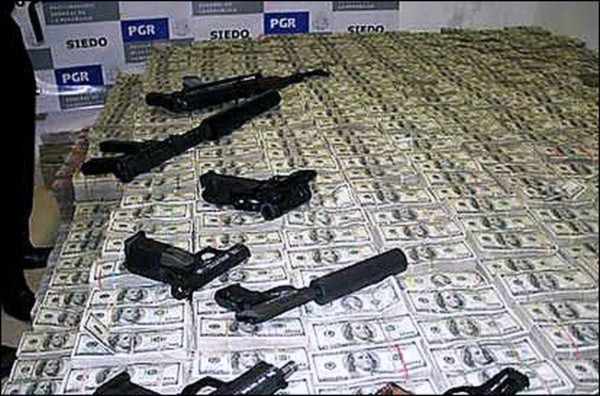

 anyone seen my little mate Erf The Worm?
anyone seen my little mate Erf The Worm?  Her I Am Wijat!! Erf the Worm is the only person allowed to call Mr Wijat...just "Wijat.."
Her I Am Wijat!! Erf the Worm is the only person allowed to call Mr Wijat...just "Wijat.." I'm Al Wijat Mr Wijat's UpStart son...
I'm Al Wijat Mr Wijat's UpStart son...  I'm Marvin the Marvelous.. Mr Wijat's crazy ideas man and inventor...
I'm Marvin the Marvelous.. Mr Wijat's crazy ideas man and inventor...








 , Marvin the Marvelous
, Marvin the Marvelous  , Mr Wijat's upstart son Al Wijat
, Mr Wijat's upstart son Al Wijat  and
Magic Rabbit ....that no one else can see except Mr Wijat through his
Magic Glasses designed by his crazy ideas man and inventor friend Marvin
the Marvelous
and
Magic Rabbit ....that no one else can see except Mr Wijat through his
Magic Glasses designed by his crazy ideas man and inventor friend Marvin
the Marvelous





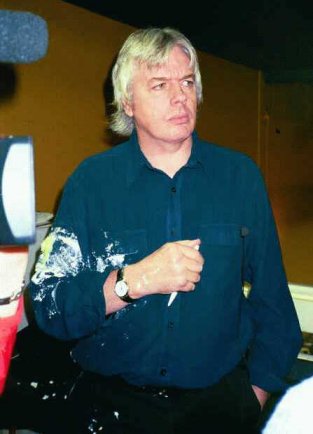
 David now has another book out titled - with not a hint of presumption - "The Biggest Secret". We'll be reviewing it when we get totally bored some evening. We wasted some holiday money on a personal copy but we've had it for t
David now has another book out titled - with not a hint of presumption - "The Biggest Secret". We'll be reviewing it when we get totally bored some evening. We wasted some holiday money on a personal copy but we've had it for t
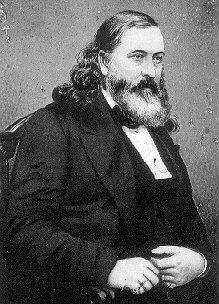 No discussion of anti-Masonry would be complete without an extensive mention of Albert Pike. The flyleaf of a biography
No discussion of anti-Masonry would be complete without an extensive mention of Albert Pike. The flyleaf of a biography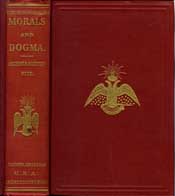 Morals and Dogma
Morals and Dogma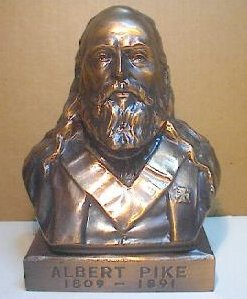 Knowledgeable Masonic authors say these were the words of Pike himself but others aren't so sure. Regardless, the words appear in every copy so if a person claims that the OTHER parts of the book constitute some sort of 'rulebook' for Freemasonry, why don't they note THIS part which totally refutes that claim? How can one assume that Masons follow blindly everything else Pike 'taught' (he wasn't 'teaching' but that's another discussion) but ignore the two sentences that start the book?
Knowledgeable Masonic authors say these were the words of Pike himself but others aren't so sure. Regardless, the words appear in every copy so if a person claims that the OTHER parts of the book constitute some sort of 'rulebook' for Freemasonry, why don't they note THIS part which totally refutes that claim? How can one assume that Masons follow blindly everything else Pike 'taught' (he wasn't 'teaching' but that's another discussion) but ignore the two sentences that start the book?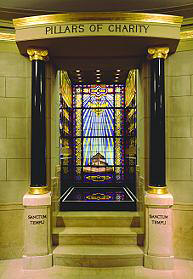 While Pike was an extraordinary man, his writings are mischaracterized and the shadow he casts over Freemasonry today is, for all intents and purposes, inconsequential. His
While Pike was an extraordinary man, his writings are mischaracterized and the shadow he casts over Freemasonry today is, for all intents and purposes, inconsequential. His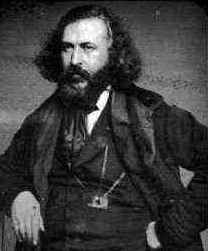
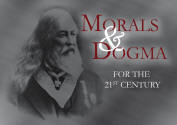 There is a 2007 book titled
There is a 2007 book titled And if you really enjoy Pike's prose, you will certainly enjoy
And if you really enjoy Pike's prose, you will certainly enjoy Reading about Pike
Reading about Pike


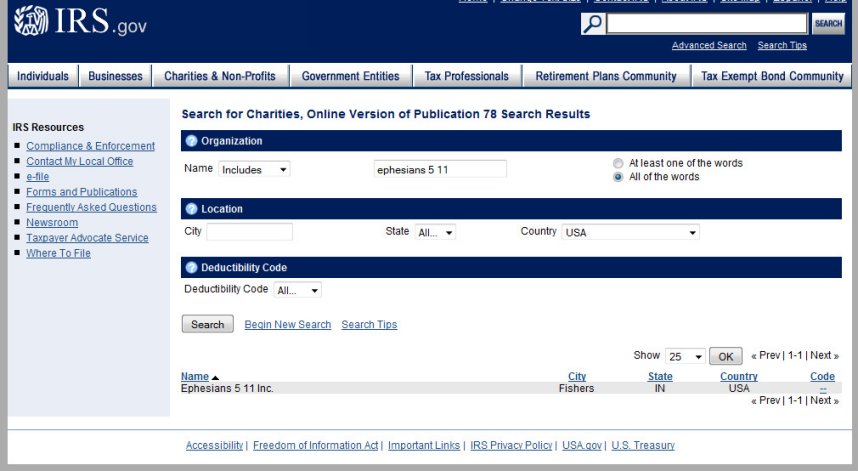




 Such behavior is not new. From the dawn of civilization, people feared and worshiped things that they couldn't rationally explain. Whether it's solar eclipses or wheat circles, they'll concoct explanations, often with foreboding overtones. Today it continues with those who try to link Freemasonry with their evil world domination theories!
Such behavior is not new. From the dawn of civilization, people feared and worshiped things that they couldn't rationally explain. Whether it's solar eclipses or wheat circles, they'll concoct explanations, often with foreboding overtones. Today it continues with those who try to link Freemasonry with their evil world domination theories!










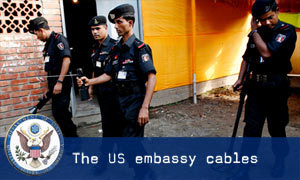







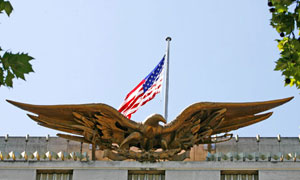







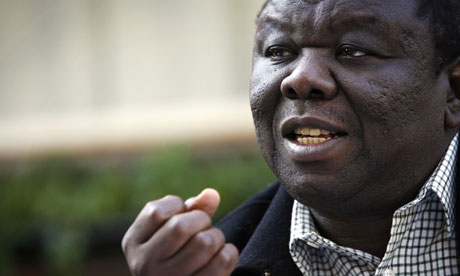











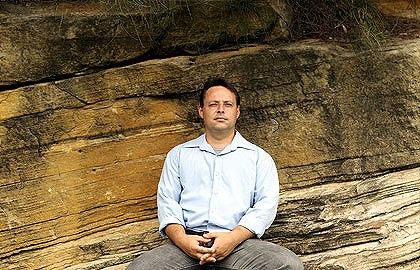
















 http://www.liveleak.com/view?i=ll_a8a_1196450643
http://www.liveleak.com/view?i=ll_a8a_1196450643












